MUHOLI
HISTORY MUST REMEMBER US

SEPTEMBER 2023 A FRIC A



20

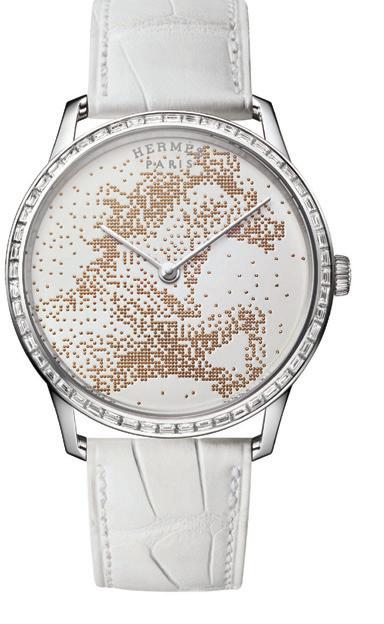
AFRICAN CONSCIOUSNESS: A 21st-century reflection on identity, being and belonging in Africa
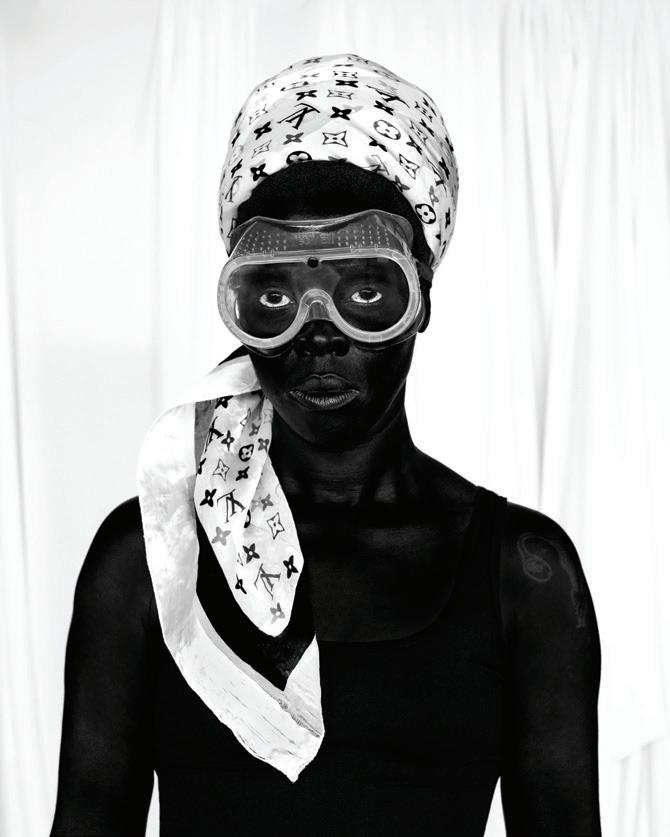
22
FNB ART JOBURG’S ALL-AFRICA LINE UP: A private preview of the themes and artwork at this year’s fair

26
CLICK: MADE YOU LOOK: Meet visual activist Muholi, an iconic artist of our time
44
JAPAN’S ART ISLANDS: An African art lover’s pilgrimage to uncover this unique destination in the Far East
2 Regulars 4 ED’S NOTE 6 YOUR LUXURY 8 YOUR WATCHES 12 YOUR STYLE 16 YOUR DIARY 32 YOUR COLLECTOR 34 YOUR PIONEER 36 YOUR TRAVEL 40 YOUR WHEELS 43 YOUR FOOD 48 YOUR DOWNTIME Contents
8 26 SEPTEMBER 2023 22 12
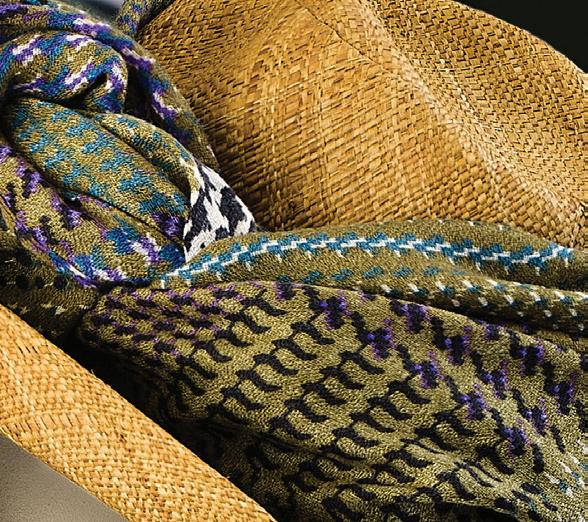



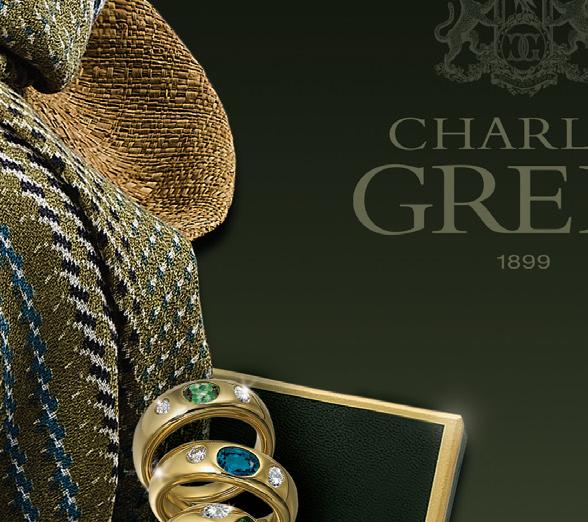
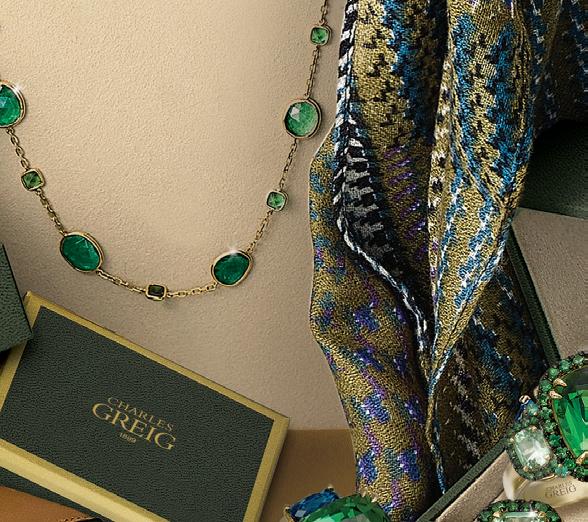
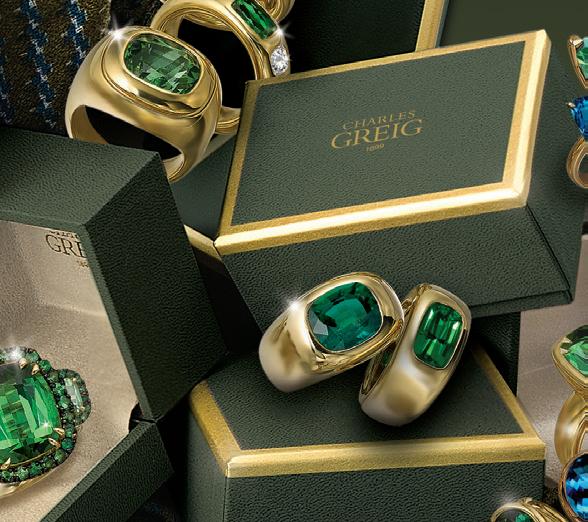


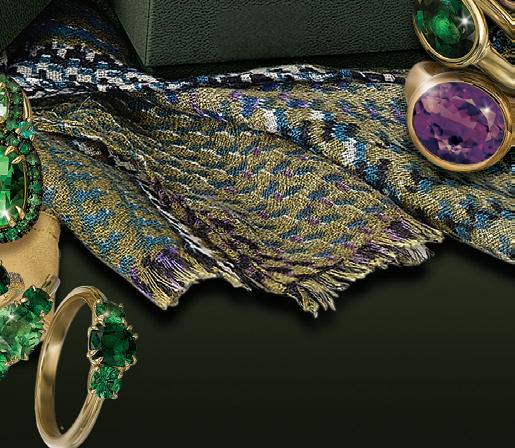
in 18 karat yellow gold, christoffjewelers.com
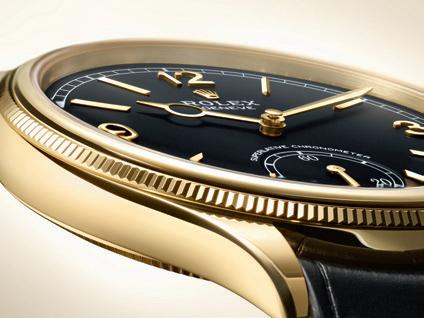

One of my biggest fascinations with art and its influence is how it can define an environment so decidedly, it becomes a natural adjective. Art can imitate life and vice versa so well that corners of big cities come to be known as art somethings-or-other; art districts buzz to the brim with art-loving crowds and patrons of its art hotels, art restaurants, art bars, art bookstores and conceptual art fashion boutiques.
Such is the evolution of this facet of culture that many are saying it’s now having its moment on African soil. We’ve always had the talent, but it’s the infrastructure in the form of galleries, museums and institutions – and the art-inspired establishments that come with them – that’s kept us steps behind the West.
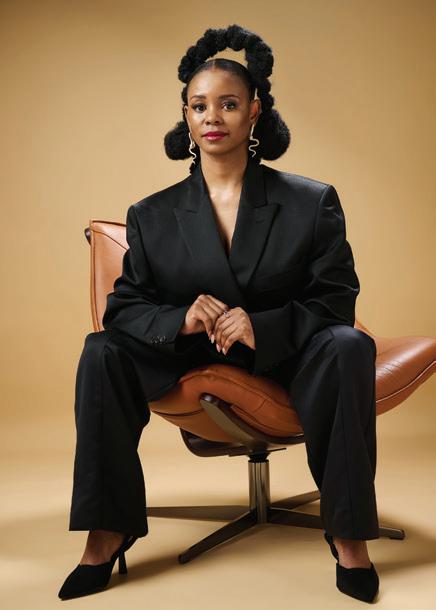
The continent, however, has shaken off its slumber in the most exciting way; galleries can be found all over Africa, and institutions and foundations are defining an art market that’s reflective of our lived experience. The talent grows with spill-over effect as leaders of the artist pack,

MY TOP PICKS
such as Kenyan-born Wangechi Mutu, are now followed closely by young talent like Tanzania’s Sungi Mlengeya and, in South Africa, visual activist Muholi, who graces our cover, continues to reverse the Western gaze with unflinching power.

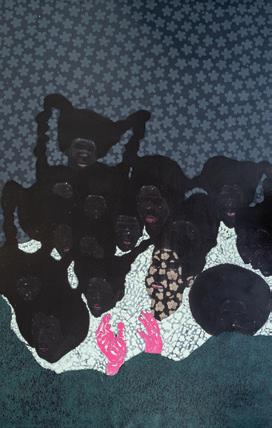
Life lived through the lens of art is richer and enriching if you invest in the right pieces and being a Joburg native, I so look forward to art taking over how we experience the city this month. With a major art fair and other artrelated events on the go, Joburg morphs into a true art city – even if only for a moment.
EDITORIAL:
EDITORIAL DIRECTOR Jacquie Myburgh Chemaly jacquie@yourluxury.africa


PO Box 1053, Sea Point 8060, Cape Town. All rights reserved. Whereas precautions have been taken to ensure the accuracy of information, neither the editor nor
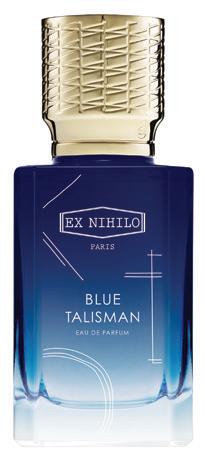
Africa can be held liable for any inaccuracies, injury or damages that may arise. The opinions expressed in the articles may not reflect those of the publisher. All prices correct at time of going to print.
yourluxury.africa
4
EDITOR
ED’S NOTE
FROM THE
MANAGING EDITOR Rizwana
CREATIVE DIRECTOR
BEAUTY EDITOR
COPY EDITOR
PROOFREADER/CONTRIBUTOR
Herringer IMAGE EDITOR Coralie Elske PRODUCTION ASSISTANT Rachael Akerman rachael@yourluxury.africa ADVERTISING & MARKETING:
Yvonne Shaff +27 (82)
I yvonne@yourluxury.africa ADVERTISING CO-ORDINATOR Yvette Mehl + 27 (21) 439 4907 I
MANAGEMENT: MANAGING DIRECTOR & PUBLISHER
EDITOR Ntokozo Maseko Ntokozo@yourluxury.africa
Variawa rizwana@yourluxury.africa
Kate Walters
Ingrid Wood ingrid@yourluxury.africa
Tamlyn Cumings
Leigh
MD
903 5641
yvette@yourluxury.africa ACCOUNT MANAGER: NATIONAL Gina van de Wall I gina@yourluxury.africa
Yvonne Shaff
DISTRIBUTION On the Dot, Media Support PRINTED BY Hirt & Carter for YourLuxury:
YourLuxury
DISTRIBUTION & PRINT:
IMAGES SUPPLIED EDITOR’S PHOTOGRAPH MPUMELELO MACU
OUR COVER A FRIC A MUHOLI HISTORY MUST REMEMBER US
PHOTOGRAPHER: Zanele Muholi, Vika II, small, The Decks, Cape Town, 2019, Baryta print, 60cm x 44cm
WonderBuhle Moya Munye, 2022, Acrylic and metallic paint on canvas, 223.5cm x 142cm, Courtesy of BKhz Gallery
Christoff Jewellers Capri Cluster Earrings featuring checkerboard cut midnight blue topaz, turquoise and peridot set
Ex Nihilo Blue Talisman EDP, skins.co.za
Rolex Perpetual 1908, rolex.com
NtokozoMaseko
King Houndekpinkou, Outer Space Silver Ritual Vessel Sculpture, 2022, Hayden Phipps & Southern Guild
MASTER OF MATERIALS




RADO.COM
CENTRIX
RADO
JOIN US ONLINE www.yourluxury.africa
IF YOU’VE BEEN ENJOYING OUR PRINT editions of YourLuxury Africa, head to our website at yourluxury.africa
There, we share news and views about the ultimate luxury lifestyle, with carefully curated content from all over Africa and beyond. From food to fashion, wine to watches, wheels to wings and fragrance to fine art – it’s all there in one exquisite online space. And don’t forget to follow us on Instagram and Facebook too.
MEET OUR CONTRIBUTORS
PETRA
MASON
After 20 years living in New York, cultural historian Petra Mason returned to Johannesburg and founded Obscure Studio and ArtHit. She also authored a trilogy of vintage photography books for Rizzoli New York. “To me, luxury is when all my senses are in sync and I journey into the imagination.”

See: p24
DION CHANG


Dion Chang is the founder of Flux Trends. He’s an intrepid traveller, a committed cat butler and a novice end-of-life doula. “To me, luxury is a new stamp in my passport, an experience that becomes a cherished memory and the freedom that comes with focusing on your needs rather than your wants.”

See: p44
REV. KABELO MOTLHAKANE
Rev. Kabelo Motlhakane is an Anglican chaplain, thought leader, mediator and transformation and inclusion specialist. He holds an MTh specialising in Black consciousness and African theology, and is a tennis, running, fashion, wine and cooking enthusiast. “To me, luxury is the ability to find beauty in the mundane, the natural and the creative.”
See: p22
6
STYLE
yourluxury.africa
WATCHES & JEWELS ART & CULTURE WHEELS, WINGS & WATER TRAVEL LIFESTYLE ABOUT
YOUR LUXURY PHOTOGRAPH THEKISO MOKHELE
ARTWORK MISHECK MASAMVU, NOT ENOUGH SLICES OF THE BREAD, 2022
EXTRAORDINARY
Steyn City, where luxury knows no bounds. What defines luxury to you? Is it the expansive space that allows you to breathe freely, the meticulous attention to detail that elevates every experience, the uniqueness, or the feeling of being one with nature? Every facet of Steyn City has been designed to embody these principles, ensuring an unparalleled experience that leaves no detail unattended.
Uniqueness, another hallmark of luxury, and Steyn City’s homes stand proudly as a beacon of individuality. Our approach is forward-looking, constantly pushing boundaries and reimagining what luxury and design means in today’s world. We don’t follow trends; we set them. With Steyn City, you can indulge in an exclusive and distinctive environment that reflects your personal style and aspirations.
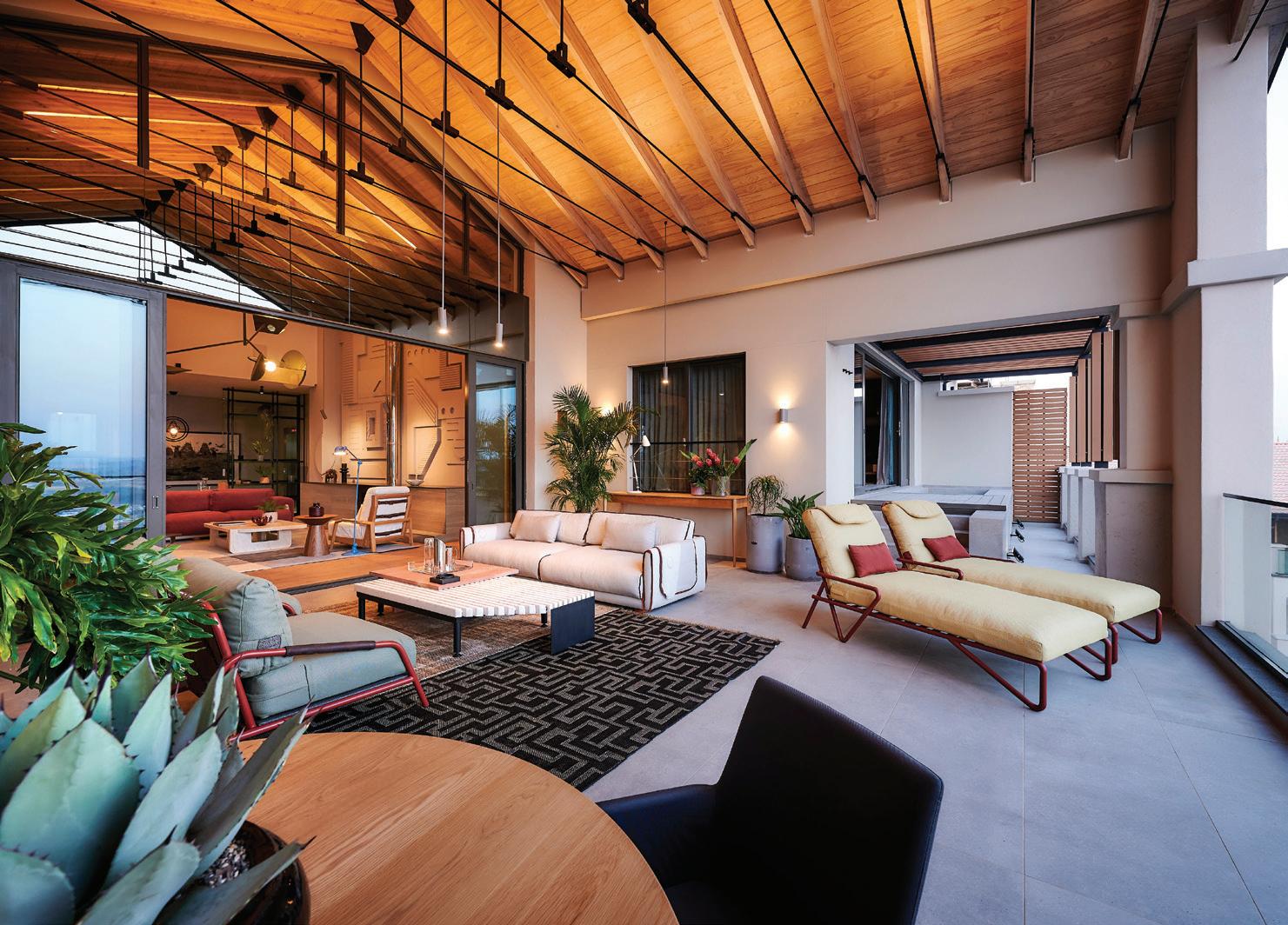
Book your exclusive viewing at www.steyncity.co.za or email sales@steyncity.co.za and marvel at the ultimate luxurious lifestyle on offer in Gauteng. Stands | Homes | Apartments Rentals | Rent-to-Own
FROM HEART TO MARKET: the allure of passion investments
MÉTIERS D’ART IS THE ART OF WATCHMAKING THAT’S IN THE HANDS OF A PRECIOUS FEW, YET COVETED BY SO MANY
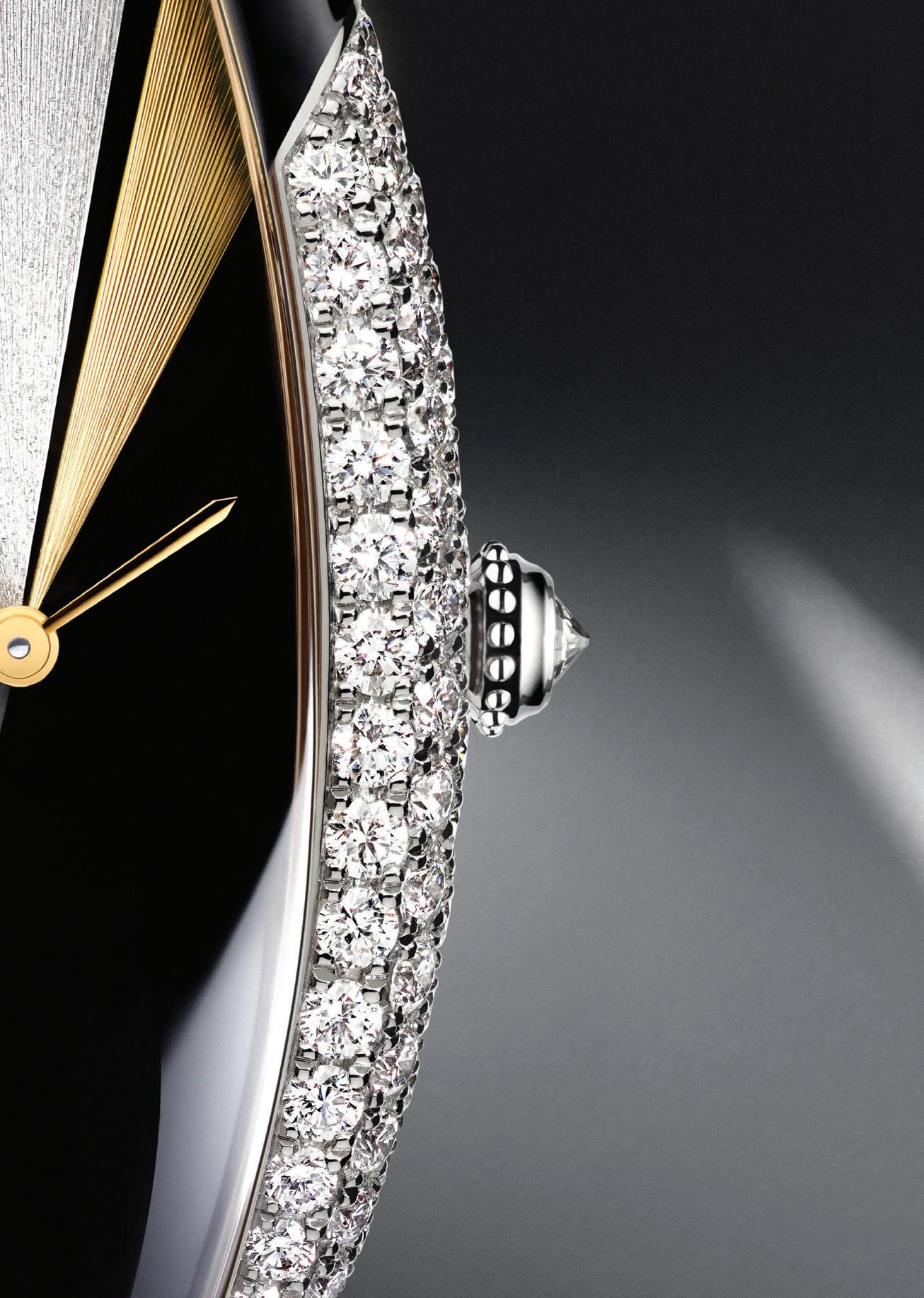
8 yourluxury.africa
WORDS DEBBIE HATHWAY
OPPOSITE:
The Cartier Baignoire Allongée involves machining, enamelling and lacquering, which takes 24 months to complete.
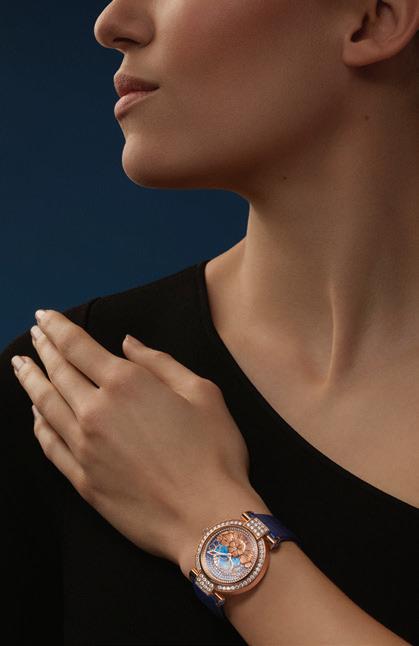

CLOCKWISE FROM TOP:
This Chopard Imperiale presents the lotus against a lacquered mother-of-pearl dial, engraved with satin-brushed gold.
The Hermès Arceau Petite Lune features an astral world sculpted through meticulous artisanal work.

The Slim d’Hermès watch dial has 1 678 gold or enamel beads outlining a galloping horse.
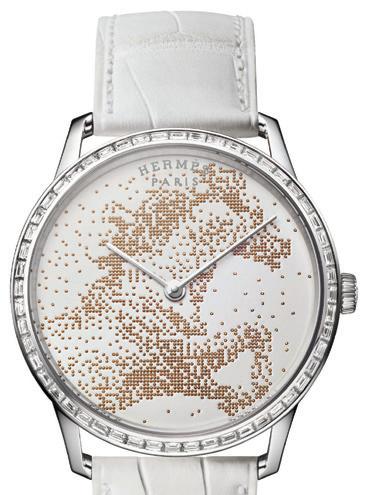
The fairy on the Lady Féerie of Rose by Van Cleef & Arpels has wings made of pink plique-à-jour enamel.
Investments in art (29 percent) and watches (18 percent) saw double-digit growth last year, ranking first and third on the Knight Frank Luxury Investment Index, which tracks the value of 10 investments of passion, weighted to reflect their collectability. Watch connoisseurs who added a Métiers d’Art timepiece to their collection were arguably already ahead of the game with a two-in-one purchase of a miniature work of art that happens to tell time. Prized for their rarity and demonstration of ancient decorative techniques, they showcase the creations of a handful of highly skilled artisans executed on a canvas often less than 40mm in diameter with a brush, in the case of enamelling, consisting of a single sable hair.
While England established its reputation as the foremost watchmaking country in the world in the early seventeenth century, France always had the upper hand when it came to decoration through its school of enamel painters. According to Watches: Their History, Decoration and Mechanism by GH Baillie, the fashion to display watches then provided “a fresh field for the work of the goldsmith, the engraver, the lapidary and the enameller at a period when the craftsman had acquired a high degree of technical skill and before he had ceased to be an artist.” Some of the main types of decoration were engraved scenes, landscapes and patterns on covers and dials. Lapidaries’ work on cases formed of semi-precious stones like rock-crystal and agate or set with pearls and precious stones and enamel, including translucent and opaque or paintings on enamel.
9 yourluxury.africa YOUR WATCHES
ABOVE:
The Nuit Fantastique by independent French watchmaker, Trilobe, features a Clous de Paris – a type of guilloché (embossing) – at the centre of the seconds wheel.

ABOVE RIGHT:
The dial centre of the World Time Minute Repeater Reference 5531 by Patek Philippe is adorned with a new cloisonné Grand Feu enamel motif.

RIGHT:
Artisans of Jaeger-LeCoultre’s in-house Métiers Rares® atelier create the Art Deco-inspired geometric pattern on the Reverso One Precious Colours with miniature painted grand feu enamel and diamond-set accents.
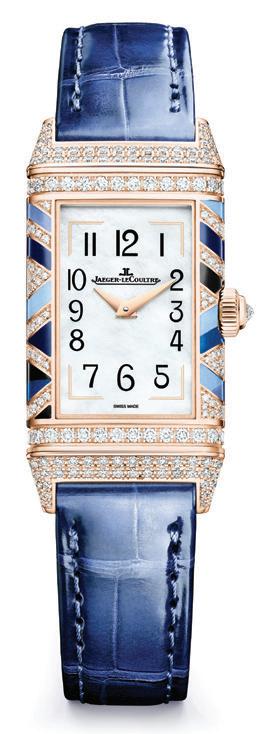
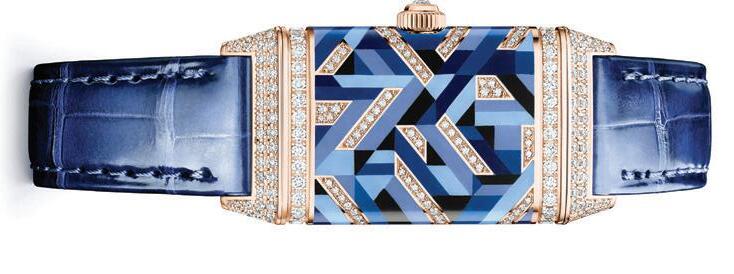
Blois in France was the first centre for enamelling, producing the best work in the heart of the Loire Valley. Early examples of enamelling are found on English, French and German watches, but the art soon settled in Geneva, Switzerland. Today, the artisans who specialise in artistic crafts such as enamel painting, marquetry and engine-turning are as rare as their creations, giving some context to their eye-watering price tags. There are very few opportunities for formal training, so their skills must be passed on from artisan to artisan to survive. Some artisans remain fiercely independent to protect their creativity, like enameller Anita Porchet, who has decorated dials for Patek Philippe and Vacheron Constantin. Sandrine Stern, head of creation at Patek Philippe, told Reuters: “Miniature painting on enamel is even more rare; it’s a true gift.”
Some brands offer these skills in-house. Jaeger-LeCoultre has since 1866 when it became the first fully-fledged Manufacture in the Valleé de Joux, offering 180 capabilities under one roof. Gem-setting artist Audrey Grosset-Janin is one of the custodians of this age-old expertise. “Weaving inseparable ties between exceptional watchmaking and high jewellery, artistic crafts merge precision with emotions… When the motif takes shape for the first time before my very eyes, I am flooded with a unique feeling. At that moment, I love to think of the woman for whom this creation is intended and to imagine that she will experience the same sensation,” says Audrey.
Fine decorative arts have long featured in Cartier creations, and the perfect example of this being one its first wristwatch collaborations with Edmond Jaeger in 1913. Its round platinum case is set with diamonds and inserted into a beautiful outer case of intaglio-engraved rock crystal, perpetuating the centurieslong tradition of rock crystal in watchmaking, showcasing the engraver’s art. ■
yourluxury.africa
10
YOUR WATCHES IMAGES SUPPLIED


baume-et-mercier.com Automatic, 39 mm
WEARABLEArt
ART AND STYLE ARE INTRINSICALLY LINKED AND FASHION BRANDS REGULARLY DRAW INSPIRATION FROM ARTISANS – BE IT IN MOTIFS, COLOUR PALETTES OR ARTIST COLLABORATIONS

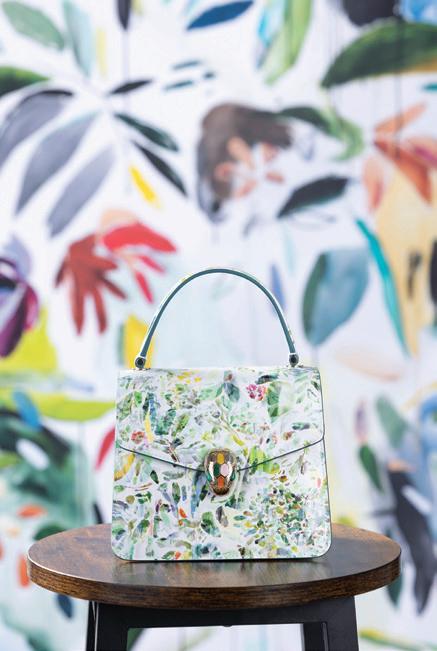
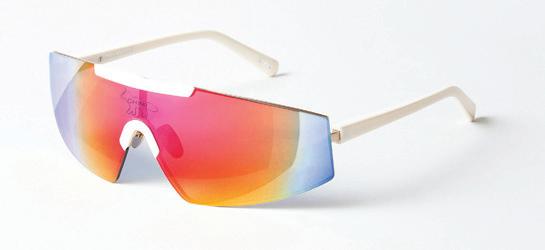
COMPILED BY INGRID WOOD
Dolce&Gabbana
Keira Embellished Patent

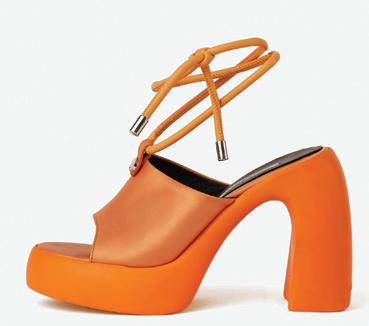



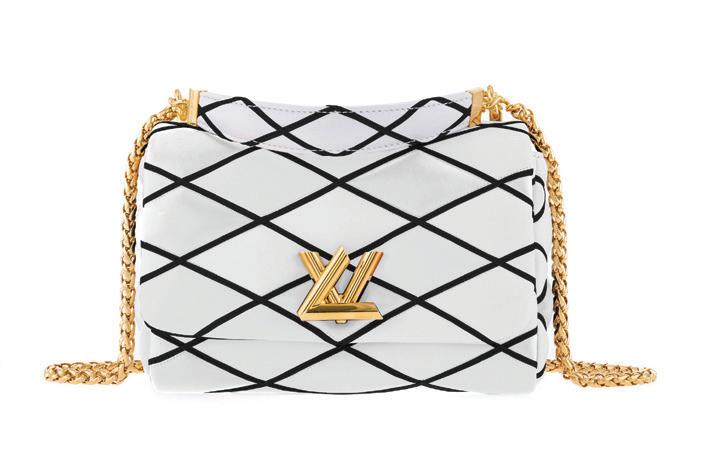
yourluxury.africa
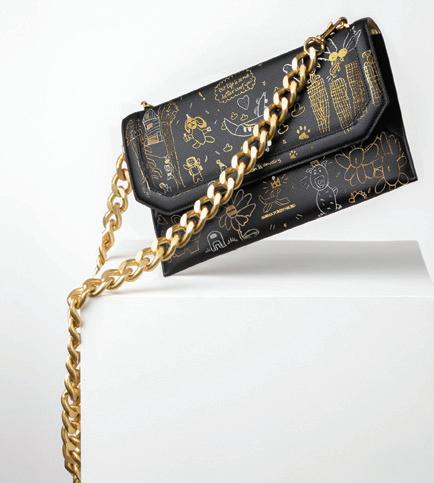
12
YOUR STYLE
CHIMI x Maison Kitsuné shield white sunglasses, R4 499, story.capetown
Karl Lagerfeld Astragon Longlace Slides, R6,990, europaart.co.za
Louis Vuitton GO-14MM bag, R134 000, and Pico GO-14MM (mini version), R77 000, louisvuitton.com
Leather Sandals, R27 000, dolcegabbana.com
Bulgari x Zhou Li Serpenti Forever Top Handle bag, POR, bulgari.com
Seven Ever Lady handbag in Powder Blue ostrich leather, R17 400, thesevenstore.co
#AmazingAF Maxi clutch bag by Adrian Furstenburg, R46 441 (made to order, price may differ with different material use and level of personalisation), adrianfurstenburg.com
Loewe Paula’s Ibiza cat-eye sunglasses, R6 900, Picot & Moss Eyewear
Cartier Panthère de Cartier eyewear, R20, 050, Cartier Boutique Sandton City
IMAGES SUPPLIED
Europa Art Checkmate Mule, R3 190, europaart.co.za

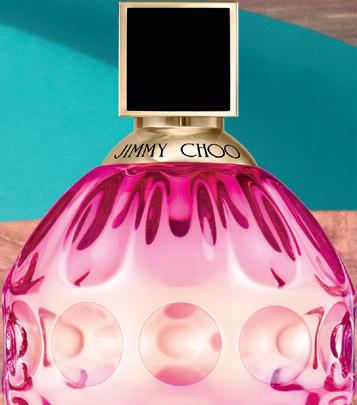

COSMETICS Collectible
THE DESIGNS ON THESE BEAUTY GEMS ARE AS INSTAGRAMMABLE AS THEY ARE FUNCTIONAL, WHICH IS WHY THEY’RE TAKING CENTRE STAGE ON OUR COSMETICS COUNTER
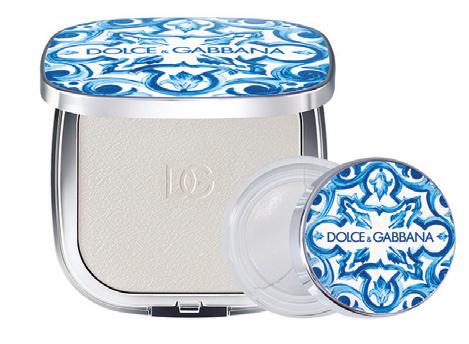
COMPILED BY
WHERE ART MEETS BEAUTY
The common thread running through the Amouage Library Collection is the concept of knowledge, so when Amouage chief creative officer, Renaud Salmon, researched the idea of uncertainty and unpredictability for King Blue –the new OPUS XV of the Library Collection – he found it was the ideal way to explore his fascination with surrealism. As he researched these concepts, it led him to one of surrealist artist René Magritte’s final pieces of work, The Art of Living. While searching for the work, he came across a picture of it in the form of a stamp, which was released to commemorate Havana’s Salon De Mayo. This was
Les Pinceaux de Chanel collection of three essential brushes, R3 280, exclusive to Chanel Fragrance and Beauty Boutiques: Sandton City, V&A Waterfront, Menlyn, Gateway
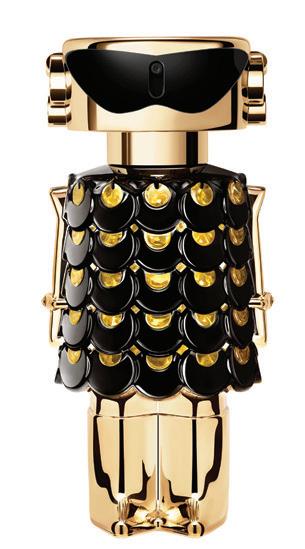


Glow Universal Blurring Powder, R1 110, and Brow Styling Gel, R730, available at Woolworths V&A Waterfront and woolworths.co.za

a fortuitous connection for Renaud, as Cuba was the inspiration behind Opus XIV Royal Tobac.



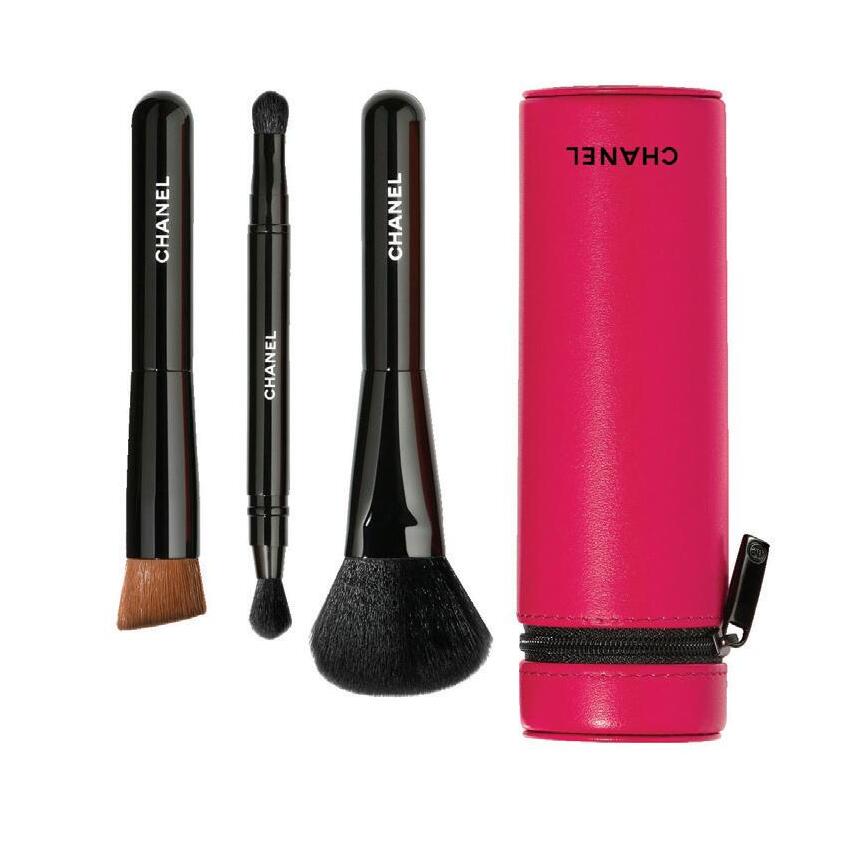


King Blue is a perfume of endless questions, “bringing together the perception-bending uniqueness of surrealism and the open-spirited ethos of the Salon De Mayo.”
The art is taken a step further with the packaging featuring artwork by Belgian creative director Louise Mertens, who has created a sense of mystery through bluetinged layers and textures, while the visual campaign uses sculptures by Juliette Zakowetz to create an organic landscape. The fruity, ambery scent is surprising, unpredictable and sophisticated.
 Dolce&Gabbana Solar
Dolce&Gabbana Solar
14
IMAGES SUPPLIED
yourluxury.africa
Zafferano by Acqua di Parma EDP, R4 199, Woolworths (Available from
YOUR BEAUTY
Salle Privée The Mind Vaccine (Salle Privée x RVDK) EDP, R3 330, skins.co.za
Paco Rabanne Fame Parfum EDP, R3 405, selected beauty outlets
Off-White Solution N°1 EDP, R1 400, skins.co.za
Amouage Opus XV King Blue EDP, R10 140, arcstore.co.za

THE NDEBELE SUPERHERO
London’s October Gallery presents South African artist Zana Masombuka’s first solo exhibition this month. Titled ‘Nges’rhodlweni: A Portal for Black Joy, Zana – who is also known as ‘Ndebele Superhero’ – explores the crossing of culture and identity, weaving visual narratives in multidimensional mediums of film, photography, sculpture and performance. Drawing inspiration from her Ndebele roots (the exhibition title refers to the sacred space in a Ndebele household where everyone gathers to share in the joy of knowledge and artistic expression), Zana’s works are imbued with traditional lore, which re-examines the artist and viewer’s essence within wider communities and cultural inheritance. It opens 5 September and runs until 30 September. octobergallery.co.uk;

@ndebelesuperhero
ALL THAT JAZZ
The Standard Bank Joy of Jazz festival features Grammy-award-winning musicians Robert Glasper and Andreas Vollenweider and offers music lovers an incredible cocktail of jazz performances. The programme also includes tenor powerhouse Alexander Beets Quintet, R&B and Afro-soul singer Zonke and multiple SAMA-winner, Simphiwe Dana (left). 29 and 30 September at the Sandton Convention Centre. joyofjazz.co.za

DELICIOUS FUSION
DSTV’s Delicious Festival celebrates a decade of the best local and international music acts and a fusion of cuisines. Grammy-award winners Maxwell (above), Nigerian singer/songwriter Tems and our very own King of Dance, Zakes Bantwini, headline the weekend’s festival. Arrested Development is also there, as is US funk soul disco outfit Shalamar and local gospel choir Joyous Celebration. 23 and 24 September at Kyalami Grand Prix Circuit, Johannesburg. delicousfestival.com
AT THE OPERA
Tosca is Puccini’s three-hour operatic tragedy that follows an ill-fated romance set against Italy’s political turmoil in 1800. It’s a profound tale of passion and betrayal, and stars soloists Nobulumko Mngxekeza (right), Lukhanyo Moyake, Conroy Scott and Lwazi Dlamini accompanied by The Philharmonic Orchestra. From 12 – 17 September at Artscape Theatre Centre. capetownopera.co.za

yourluxury.africa
ART VISIONS
As we celebrate art month in South Africa, we raise our glasses to document photographer Lindokuhle Sobweka (above), who has won the FNB Art Prize 2023. The first time a documentarian has received the coveted award, Lindokuhle’s powerful photography portrays compelling South African narratives that historically contemplate the present. @lindokuhle.sobweka

Last year’s FNB Art Prize winner Dada Khanyisa presents their semiautobiographical solo exhibition, titled Cape Town, this month too. Capturing moments and space that have shaped them while living in the Mother City, it’s on at the Johannesburg Art Gallery until February 2024. friendsofjag.org; @dadakhanyisa
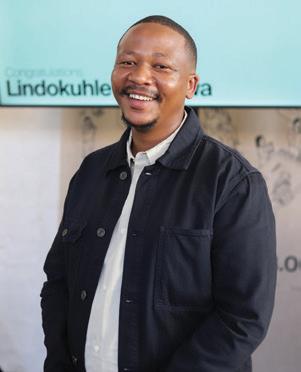
16
YOUR DIARY IMAGES SUPPLIED, ZANA MASOMBUKA NGES’ RHOLWENI: EBANDLA 1, 2018, COURTESY OF THE ARTIST AND OCTOBER GALLERY; OPERA IMAGE BY ELISABETH MANUELL; COMPILED BY LEIGH HERRINGER
THERE’S MORE TO HIGHNET-WORTH CLIENTS THAN SIMPLY HAVING ASSETS WORTH OVER A SPECIFIC THRESHOLD, SAYS JÉAN MINNAAR, MANAGING DIRECTOR OF PRIVATE CLIENTS BY OLD MUTUAL WEALTH. HE BELIEVES THAT CLIENTS SHOULD BE TREATED AS MORE THAN JUST THEIR FINANCIAL WORTH

BEYOND WEALTH
“Wealth managers who still categorise high-net-worth (HNW) clients solely based on the value of their discretionary investments in dollars or rands are overlooking an essential aspect,” explains Jéan. “For these clients, wealth management is about so much more than asset accumulation. It’s about mindset and strategic decision-making, which is why we focus on the intricate complexities involved in guiding these clients across multiple asset locations.”
Clients are incredibly diverse and it is therefore virtually impossible to provide them with a one-size-fits-all solution. “Successfully advising clients lies in understanding that they live and invest as global citizens, prioritising wealth preservation as much as wealth accumulation,” Jéan points out.
“We therefore address aspects that extend far beyond asset allocation and portfolio management; these include trust structures, multi-jurisdictional estate planning, fiduciary advice, mechanisms for multi-currency exposure and determining the most suitable geographic locations to domicile clients’ assets.”
According to Jéan, there has been an ongoing debate in the past decade around local versus offshore investment exposure. However, he argues that this debate misses the mark as it focuses too narrowly on asset management and
short-term perspectives, which are not aligned to the needs of clients.
True wealth management requires a shift in thinking toward multi-generational planning and in this context, the question of how much of a family’s wealth should be invested in South Africa changes.
“It’s important to recognise that South Africa represents only a small portion of the global investment universe. Clients who are global citizens do not benefit from having a significant portion of their investment capital tied up in local investments,” Jéan says.
With clients’ assets increasingly located offshore, new regulatory challenges arise and it becomes vital for wealth managers to establish connections and partnerships with experts in multi-jurisdictional disciplines such as custody, estates, fiduciary matters, trusts and more.
“In this way, true wealth management is a transformative process that connects various elements to create a powerful outcome.This requires a specific mindset and a depth of expertise,” concludes Jéan. “Ultimately, our role –part custodian, part guide – is to protect clients from costly financial mistakes and help them strike the crucial balance between income, wealth creation and wealth preservation”.
oldmutual.co.za/wealth/private-clients
Private Clients by Old Mutual Wealth offers holistic, bespoke solutions for high net worth clients. We partner with you and various specialists, tapping into the required resources to provide an integrated plan for your holistic financial affairs, including investments, wealth structuring and transfer strategies, proactive tax planning and portfolio lifestyle and administration. Our level of individual attention and interaction is a defining standard in the personal service we provide. We boast a strong track record in wealth and investment management. As part of a brand that has been growing wealth for South Africans for nearly two centuries, we believe that there is no substitute for experience that comes with managing wealth through various economic and market cycles. Our team, therefore, has several decades of success and experience in successfully working with individuals, families, trusts and entrepreneurs in managing their wealth.
yourluxury.africa 17
COLLABORATION
ABOVE: Jéan Minnaar, managing director of Private Clients by Old Mutual Wealth.
ART around town
THE PICTURESQUE TOWN OF STELLENBOSCH IN THE WESTERN CAPE IS PLAYING HOST TO AN OUTSTANDING EXHIBITION OF CONTEMPORARY AFRICAN PHOTOGRAPHY
If you’ve wandered through the streets of central Stellenbosch this winter, you’ll have noticed large-scale photographic artworks on and around the small student town’s iconic Cape Dutch architecture. This is the Stellenbosch Outdoor Sculpture Trust’s (SOST) outdoor photography exhibition, curated by Anelisa Mangcu and organised together with exhibition patrons, Private Clients by Old Mutual Wealth. SOST was launched in 2012, and this photographic exhibition, titled Freedom, I dream up for myself and others, is the ninth iteration of public art facilitated by the non-profit. The exhibition, in line with SOST’s initiatives, has been conceptualised and designed to educate students and other members of the public about the critical importance of art as a tool of empowerment. Jean Minnaar, MD of Private Clients by Old Mutual Wealth, is intimately aware of the potentiality of art as an agent of transformation. “The appreciation of art in all forms is a global phenomenon and is as old as time itself. Beyond its emotional and aesthetic value, we believe that art is a real and tangible asset that appreciates over time,” says Jean. “Providing support for SOST’s ongoing education efforts for emerging and established artists is close to our hearts, as we believe that this kind of creative thinking is important in developing a vibrant and diverse economy.”

ABOVE:
Malick Sidibé, Nuit de Noël (Happy Club) – Drostdy Street
OPPOSITE PAGE (CLOCKWISE):
James Barnor, Two Sisters in-law, Florence and Gifty – Market Street; Roger Ballen, Dejected – Die Braak; Calvin Dondo, Heather – Ryneveld Street
Curator Anelisa Mangcu was approached by SOST and its board of trustees to assemble this exhibition based on her extensive existing body of curatorial work that doesn’t shy away from asking pertinent and probing questions. In retrospect, her decision to choose photography by African artists to make a statement about space, place and belonging in Stellenbosch makes perfect sense. The eight Masters selected by Anelisa represent a broad range of acclaimed photographic talent from across the continent that work in figuration, a subject close to her heart. “I’m a figurative curator. Right now in my career, I like to connect to things that connect to what I love the most, which is being in the business of human beings. I love people. I want to make them happy and inspire them in whatever way I can, and figuration allows me to do that.”
Familiar names like Berni Searle, David Goldblatt, Obie Oberholzer and Roger Ballen have been included, plus celebrated outliers from further afield such as Akinbode
18
yourluxury.africa
Akinbiyi, James Barnor, Calvin Dondo and Malick Sidibé. “My dream was always to work with Master photographers, particularly ones from around Africa, but also those who draw inspiration from the continent and have living experience here,” explains Anelisa. “I really wanted to focus on a photography show. Most of the photographs are black and white. There are images that have always stuck in my mind, and it was such an honour to engage with the artist or estate. When an artist puts out a work it’s a documentation of the current time, and those works are then considered to be part of the archive. What makes it so wonderful is that it really is the archaeology that was never buried.”
all the things that are said about the town should be overlooked, but art is definitely a unifying conversation. There’s always something that someone can pick up from it.” The service that art can provide in a public space, out of the intimidating conventional white-cube gallery space, was top of Anelisa’s mind as she chose the various locations for each work. “I’m aware that the art gallery is a privileged place to be in and I’m aware that some people might be intimidated by these spaces. If I can be open and inviting with my practice, then that is what I’ll do.”
proximity to one another. I really want people to explore Stellenbosch and to get to know it – and it can be daunting because of the economic, social and political discourse that is assigned to it. You can imagine that as a Black woman who is vocal on these matters, who expresses my views through exhibitions, working in Stellenbosch was no child’s play. I was incredibly mindful of the response I would get.”
That the exhibition is sited around Stellenbosch, long viewed as a bastion of White privilege, was an area of fruitful exploration for Anelisa. “I’m a huge storyteller and I really love telling stories through artworks. Stellenbosch has been seen as a space that is not inclusive of people of colour. As a Black woman, engaging in that space and seeing how others engage in it in the art world, and having a brother attend the university, I really began to understand that it’s just a small town – which is not to say that
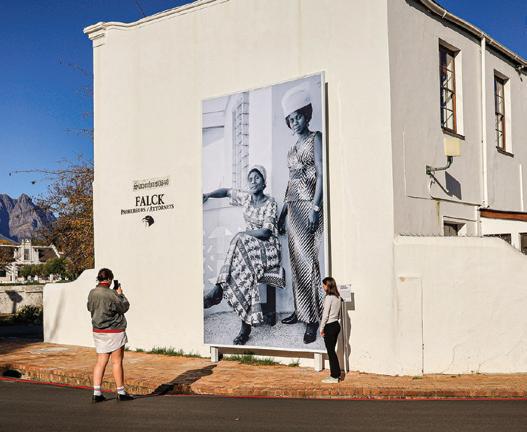
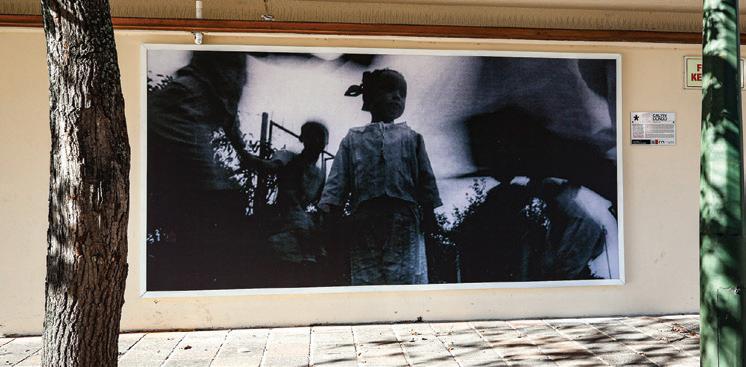

Her show allows residents and visitors to the town to take a moment out of their ordinary day and contemplate life from a new perspective. “I wanted people to find different ways to spend their afternoons and investigate the exhibition. What I love is that we have these huge images and these decently sized plaques which force the audience member to engage with the story behind the artist.”
As you move through the exhibition, Anelisa encourages you to closely examine the history of where you are. “We wanted to occupy spaces that we know people often pass. We wanted to make sure the works were in close
Beyond the exhibition itself, Anelisa and SOST teamed up with visual artist and activist Prof Sir Zanele Muholi, the Muholi Art Institute (MAI) and Art School Africa (ASA) to create educational tools and mentorships that aim to further harness the innate power of art and foster a new generation of creative practitioners. “It was imperative for me to have this (the photographic exhibition) as the foundation piece for the many projects we are hosting, which to me are lifechanging and things I’ve always wanted to do. I’m a huge believer in education. For me, it’s imperative that education is not something only the privileged have access to.” The Rupert Museum became a key partner, hosting workshops and talk spaces that facilitated intellectual
engagement. Held in June, these workshops allowed students from the Stellenbosch Academy of Design and Photography to team up with a mentor for a day to encourage artistic debate and dialogue. “I feel it should be a requirement for all schools to have an artistic interest and for these to be discussed as potential career paths in the home,” says Anelisa. Freedom, I dream up for myself and others, will be on view until March 2024. sost-exhibitions.com; sign up to our newsletter: yourluxury.africa/subscribe
19 yourluxury.africa IMAGES SUPPLIED C/O SOST COLLABORATION
‘ Art is definitely a UNIFYING conversation ’
Steve Biko was more than just a thinker, more than a philosopher and, dare I say, more than a politician – he was, to me at least, first and foremost a theologian. As South Africa observes heritage month, I imagine what Biko might preach to us and the whole of 21st century Africa; perhaps it’s a sermon titled “A Call to Being”.
Biko the theologian understood the concept of being and belonging as more than just physical. To him, being and belonging was a consciousness, a state of mind, of contribution, of leaning into the creative diversity gifted to us all by God, the Creator, Modimo or whatever descriptor we may use to speak of the energy that birthed all things.
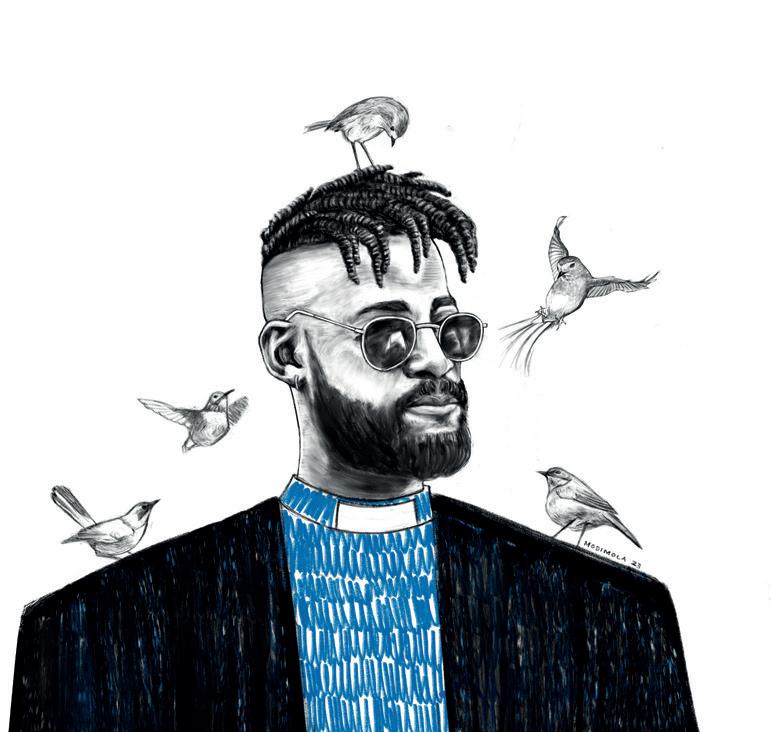
What is most appealing about the Black Consciousness Movement is that it did not locate Blackness under the guise of a chosen people. It located consciousness as something that lies within liberating one’s mind without any detriment of superiority or inferiority to the other. Our consciousness is that of invitation – an invitation to tell our own story, a new story that is not about indignities, inferiority or oppression, but one of creativity, generosity, growth
AFRICAN CONSCIOUSNESS
A 21st Century Reflection on Identity, Being and Belonging

and courage to stand out and claim a continent’s immeasurable legacy.
Africa is privileged to have many great thinkers – this continent has birthed some of the greatest minds, artists, musicians and creatives. Many of these great minds shared from the depths of their lives and made conscious decisions to speak of Africa from a point of power, strength, creativity and dignity. It is this spirit that I believe continues to keep us resilient, with the tenacity to live through some of the most painful and degrading moments with a graciousness that could never be
Simply put, my understanding of African consciousness is that it holds me responsible for how I show up and tell my story in the world. It makes me responsible for my own narrative, liberation and freedom. Though freedom is a fruit we can all savour, it remains a gift that comes from within. No external entity can ever gift freedom as it begins in the psyche and is lived through the spiritual and physical world.
found anywhere else in the world. This, to me, is what I would call the African consciousness of the 21st century. The belief that we are bigger than the stories told by those who ‘conquered’ us. We are so multi-layered that even what the world is experiencing about us now, is merely a layer of a greater creative energy.
I believe we are being called to write a different story – one where we are not only conscious of our history, but also conscious of our minds, bodies and spirituality. A story that centres our essence where no one group can dictate nor decide the fate of others. This is the story of a new Africa, not the one living under the plague of inferiority and subjected to distorted narratives of the so-called conqueror who is equally damaged by a colonial past of inhumane acts and lessons of superiority. So too, the elites cannot be entrusted to lead the charge, but all should be responsible for their own freedom and liberation, a liberation that begins in the knowledge and love of self and is expressed without the need to dehumanise the other. ■
20
yourluxury.africa
WORDS REVEREND KABELO MOTLHAKANE ILLUSTRATION MARK MODIMOLA
YOUR VOICE
THIS MONTH, 12 SEPTEMBER IN PARTICULAR, MARKS 46 YEARS SINCE THE DEATH OF A SOUTH AFRICAN GIANT – STEVE BANTU BIKO. I EXPLORE WHAT HE MIGHT THINK OF TODAY’S AFRICA
‘ I imagine what BIKO might preach to us and the whole of 21st century AFRICA; perhaps it’s a sermon titled “A CALL TO BEING ” ’
TAKUMI CRAFTSMEN DEDICATE THEIR LIVES TO DEVELOPING THEIR SKILLS AND PLAY A DEFINING ROLE IN THE HAND-CRAFTED LUXURY THAT EPITOMISES LEXUS
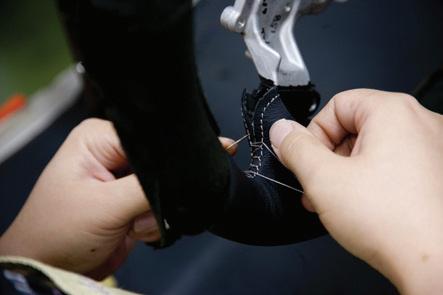

GUARDIANS OF AN
ARTISAN PHILOSOPHY
They say it takes 10 000 hours of study to become an expert in a field, but at Lexus, it takes 60 000 hours to become a Takumi Master. The ancient Japanese concept of Takumi is central to every aspect of the design and development of a Lexus, applying a human touch which can never be replicated by a machine. There is no higher honour within the brand’s engineering ranks, and of the 7 700 workers at the Lexus Miyata factory, only 19 are Takumi. Lexus Takumi craftsmen dedicate their lives to perfecting their craft – for which they have a minimum of 25 years of experience and are unrivalled in that area of expertise. They are responsible for overseeing their specialty in the manufacturing process as a team leader, instructor, talent scout and quality control auditor. After thousands of hours, the Lexus Takumi craftsmen develop senses that enable them to craft a Lexus beyond the limits of any machine or artificial intelligence. They use this sensitivity to detect the slightest imperfection, down to a fraction of a millimetre, and provide vital insights to help gain the best results. The stitched seams of the leather upholstery, for example, are overseen by a dedicated and highly skilled team, led by a Takumi Master, each one having to train at a stitching dojo to master 20 different techniques. The spindle grille – a key feature of every

new Lexus design – comes with a distinctive mesh pattern that adds to the car’s character and is the work of the Lexus Takumi.
And then there’s the Lexus LC flagship coupe, which has eight Takumi leading quality teams that check every step in the car’s production. When the bodywork has been stamped and welded together, a master craftsperson checks everything is perfectly aligned by sight and touch. There are more than 800 individual checks to be made, combining human sense with electronic tools. At the other end of the production line, a detailed inspection by two of the factory’s most skilled craftspeople cover 700 check points. All this takes place in complete silence: acute hearing is another Takumi skill, so that any abnormal sounds can be picked up and their source traced.
The final stage before a Lexus leaves the factory is a test drive on a purpose-built track. Lexus relies on the Master’s sensitive touch to assess feedback through the steering wheel and ensure all parts are working properly. The test drivers themselves are tested – 2 000 laps of training, over 200 hours.
It is a blend of skill and spirit, a life of endless repetition and no short cuts. It’s an almost superhuman level of dedication. Sign up to our newsletter: yourluxury.africa/subscribe; lexus.co.za ■
21
yourluxury.africa
COLLABORATION
LEFT AND BELOW: Takumi Masters dedicate their lives to perfecting their craft after a minimum of 60 000 hours of study in their field
FNB ART JOBURG’S ALL-AFRICA

CULTURE CRITIC PETRA MASON GIVES US A PRIVATE PREVIEW OF DOMINANT THEMES AND SELECT ARTWORKS SHOWCASED THIS MONTH AT FNB ART JOBURG


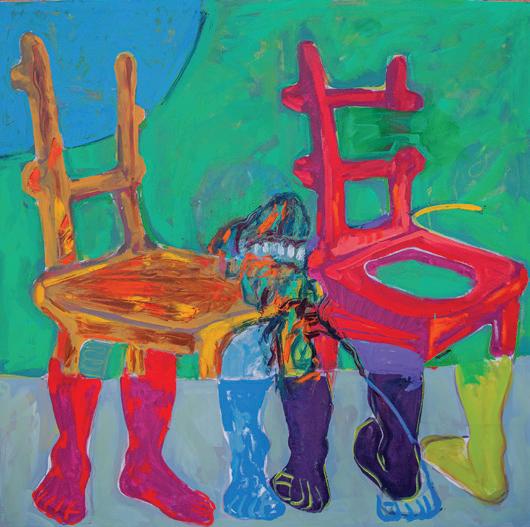
WORDS PETRA MASON
Johannesburg has taken some hard knocks lately: an innercity street explosion and a near 5.0-magnitude earthquake, urban decay and on-going deindustrialisation. So, what is the response for us innovative, resilient lot? We make and we create. We laugh and tell ‘rebuild’ jokes about the tremor. We find beauty in tragedy by creating AI images of the blast’s aftermath and for the rest, we vote.
Doomsday naysayers may be easily distracted by the secondaryart market boom as emigrating collectors sell off their collections, or by artworld tastemaker chit chat suggesting that art from the ‘dark continent’ has fallen out of vogue. What do we do about that, us resilient lot? We breathe a sigh of relief and get back into the studio while marvelling that it took so long for the international art world to see us.
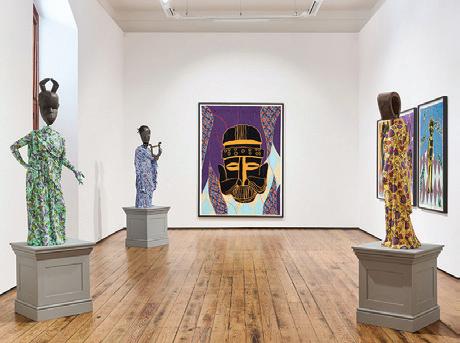
Over at FNB Art Joburg – Africa’s longest running art fair – it’s showtime, and back to the business of programming. This year’s fair has added the timely ‘Exchange of Interest – beyond market frenzies with the Global South’ to the not-to-be-missed list, as well as The BMW Art Generation, which aims to sustainably support and grow contemporary African art. The important ‘In the name of access, the artist and its audience’ with Stevenson Gallery will also take place.
A quick stroll on the skywalk (connecting FNB Art Joburg’s convention centre location with Sandton City) paints an opulent and optimistic picture: with high-end retail stores like Balmain (opening soon), Cartier, Gucci and countless others glimmering in the gilt-edged lights and perfumed air, it’s clear that in the City of Gold, collectors are collecting and shoppers are shopping.
For this, FNB Art Joburg’s 16th edition, the sweet 16 features a selection of 45 galleries divided into six sections with hashtagable titles: gallery HUB, gallery LAB, MAX, ORG, AUX and ETC. Gallery LAB promises to be a highlight. Curated by FNB Art Joburg’s fair manager Kim Kandan and independent Ghanaian curator Aida Esi Hayfron-Benjamin, the duo will present a bird’seye view of select pan-African galleries and hybrid spaces. LAB is an entirely unique experience as each gallery offers a single artist
22 yourluxury.africa
OPPOSITE (CLOCKWISE): Lady Skollie, Dada Coex’ae Qgam guarding the mouth of the cave while painting the future, Everard Read; Installation view, Yinka Shonibare, Restitution of the Mind and Soul, Goodman Gallery; Tamlin Blake, Burning The Book Flight II, Everard Read; Teresa Kutala Firmino, Oku Yelisa (To Purify) I, Everard Read; Jabulani Dhlamini, MaShabalala, Goodman Gallery
LEFT (CLOCKWISE): Gresham Tapiwa Nyaude, Equal Footing, First Floor Gallery Harare; Adolphus Washington, The Procession, Wunika Mukan Gallery; Installation view, Nandipha Mntambo, Chimera, Everard Read; Kaelo Molefe, The Cephalic Index, Guns & Rain
LINE UP
or art collective the chance to serve as an incubator. The aim here is to develop and nurture emerging talent while providing space for exploration and presenting new artists to visitors. These include Adolphus Washington (presented by Wunika Mukan Gallery), Isaac Emokpae (presented by Oda Art Gallery) and Vida Madighi-Oghu (presented by CHURCH). LAB ideas and business models are all relevant to the contemporary African arts landscape with an all-Africa line-up including galleries from Nigeria, Botswana, Harare, South Africa, Zambia and Cameroon.
HUB is the fair’s central section featuring Africa’s most prominent galleries such as Stevenson, Goodman Gallery, Everard Read Gallery, Kalashnikovv Gallery, Bkhz, Gallery MOMO, WHATIFTHEWORLD and First Floor Gallery Harare. The HUB galleries are all regulars at international art fairs and offer the best in contemporary African and diaspora artists, as well as prominent international talent.
Last year, FNB Art Joburg’s springtime kick-off undoubtedly set the pace in South Africa, playing host to several worldclass art events including Kahlo, Sher-Gil, Stern: Modernist Identities in the Global South and William Kentridge’s remarkable performance piece, The Head & The Load, among others. This year, new works, including sculptures by Kentridge, will
be featured by Goodman Gallery, as will incredible works by Nigerian-born, London-based Yinka Shonibare. Artist Boemo Diale’s paintings will feature prominently as she muscles her way into the big time with Kalashnikovv Gallery.

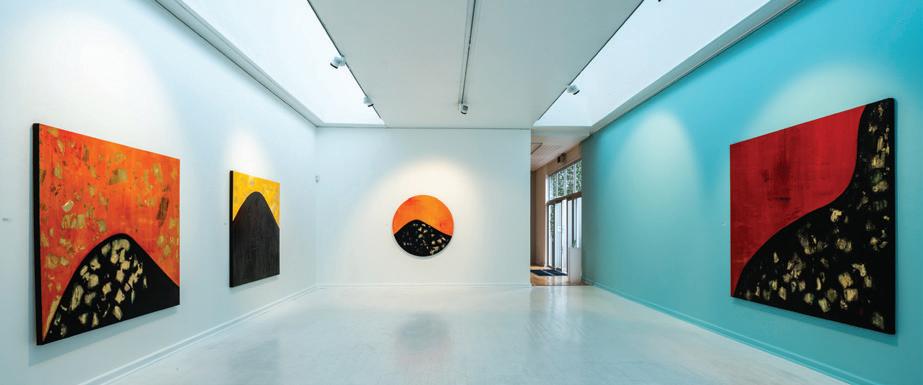
FNB Art Joburg’s managing director, Mandla Sibeko, says, “FNB Art Joburg’s mandate is to sustainably support and grow the contemporary African art market, offering what is shown on African soil. As the continent’s leading fair, we are thrilled to continue seeing this through.”
Continuously delivering on its promise to showcase the dynamic talent that the African continent has to offer, this year FNB Art Joburg’s ‘Intervention of Interest’ showcases all of our best artists under one roof.
For the vernissage – or opening night – we’re looking forward to being treated to the multi-sensory annual event, complete with a glamorous mix of art patrons, creative talent, gallerists and corporate types.
The year’s art week highlight runs over three days from 8 – 10 September at the Sandton Convention Centre. Opening night VIP tickets are R1 500 (limited), the weekend visitor pass is R360 and a day pass is R150. For more, visit artjoburg.co.za. ■
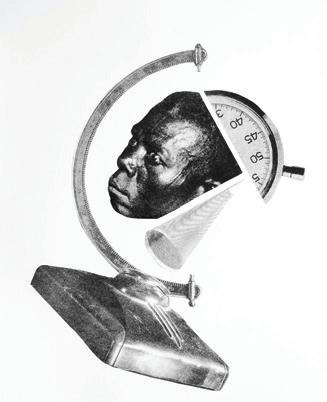

yourluxury.africa
23 YOUR CULTURE IMAGES SUPPLIED; ANTHEA POKROY/GOODMAN GALLERY; EARL ABRAHAMS/ EVERARD READ; FIRST FLOOR GALLERY HARARE; GUNS & RAIN
Since Hennessy’s global partnership with the National Basketball Association (NBA) in 2021, the best-selling cognac brand has grown the spirit of the game and its values through artistic collaborations in communities around the world. In the same year, the global ambassador for Hennessy French art de vivre launched In the Paint in Canada with the aim to bring the brand’s Never Stop Never Settle ethos to local communities through champions of the arts.
The newly designed Camp Toyoyo Jericho basketball court in Nairobi, Kenya, is the latest African collaboration to be completed. Kenyan visual and graffiti artist Kevin Esendi (aka Bankslave) drew inspiration from the shield of the country’s flag, symbolising the people’s quest to defend and protect their heritage. Bankslave incorporated Hennessy’s brand mark, the Bras Armé, blending urban culture and cognac as other artists have done before him, subtly referring to the NBA collaboration with basketball in hand. Vibrant colours, derived from the traditional East African Kanga garment, represent the game’s energy, Africa as a continent and the creativity of its people.

In Accra, Ghana, contemporary artist and muralist Nicholas Tettey Wayo (Nico Wayo) transformed the Ghana Atomic Energy Commission basketball court with different shapes and colours, signifying various cultures playing on one court in peace, love and unity – despite the competition. He uses Adinkra symbols, which each have unique representations, but together symbolise excellence.

IN THE PAINT
Nigerian visual artist Osa Seven was tasked with revitalising the Park 23 basketball court on 23 Road, FESTAC town, where he used to play as a child. His inspiration comes from the country’s diverse cultures celebrating heritage (the Benin Ivory mask is used as the official FESTAC logo), creativity and innovation. The curved patterns and colours depict clouds heavy with rain before the break of dawn, emphasising Nigerians’ resilience and resonating with Hennessy’s DNA. “This artwork is made of bold, curved patterns and colours and the Benin Queen’s bronze head represents the point where yesterday and tomorrow meet – today,” says Osa Seven.
“We’re excited [about] the result of this synergy with Osa Seven. For Hennessy, it’s always been about moving beyond the lines. Hennessy is more than a cognac, and this project is a testament to how the brand enables the true spirit of community through the In the Paint initiative,” says Oluwole Awoleke, marketing manager for Hennessy in Nigeria.
For the Zoo Lake court in Johannesburg, South Africa, Hennessy collaborated with Zimbabwean graphic artist Sindiso Nyoni, aka R!OT. His design reflects the varied indigenous craft techniques found within Southern Africa. With the sun at its centre, the warmth of the continent emanates alongside ripples mimicking the flow of the Charente River in Cognac, which was the initial maritime trading route guiding the expansion of Hennessy worldwide. “It’s a beautiful ode to Africa,” says Sindiso. “It was important to incorporate and pay tribute to contemporary African art inspired by Zimbabwe and South Africa,” he says.
24
WORDS DEBBIE HATHWAY IMAGES SUPPLIED
yourluxury.africa
HENNESSY’S LONG-STANDING COMMITMENT TO SUPPORTING TALENTED ARTISTS WHO EMBODY THE BRAND’S ETHOS CONTINUES A DECADE OF MEANINGFUL ARTISTIC COLLABORATIONS
In Dar es Salaam, Tanzania, local visual artist Joseph John Odul (known as ‘Payton’ after the NBA player Gary Payton), took charge of the iconic Spiders Basketball court design, reflecting the craft techniques of East Africa. “For me, it was important to pay tribute to contemporary African art inspired by our Tanzanian community, the rare Tanzanite gemstone and the waters of our beautiful coastal country."
The artists are united in their appreciation for the opportunity to collaborate with Hennessy on this project, creating spaces where communities can unite through designs that celebrate their vibrancy and talent. It’s a win-win all round. hennessy.com; sign up to our newsletter: yourluxury.africa/subscribe
OPPOSITE LEFT: Players on the Camp Toyoyo Jericho court in Nairobi, Kenya
OPPOSITE: The Park 23 court in FESTAC town, Nigeria, by Osa Seven
BELOW: The Camp Toyoyo Jericho basketball court in Nairobi, Kenya
BOTTOM LEFT: Zoo Lake basketball court by Sindiso R!OT Nyoniin Johannesburg, South Africa
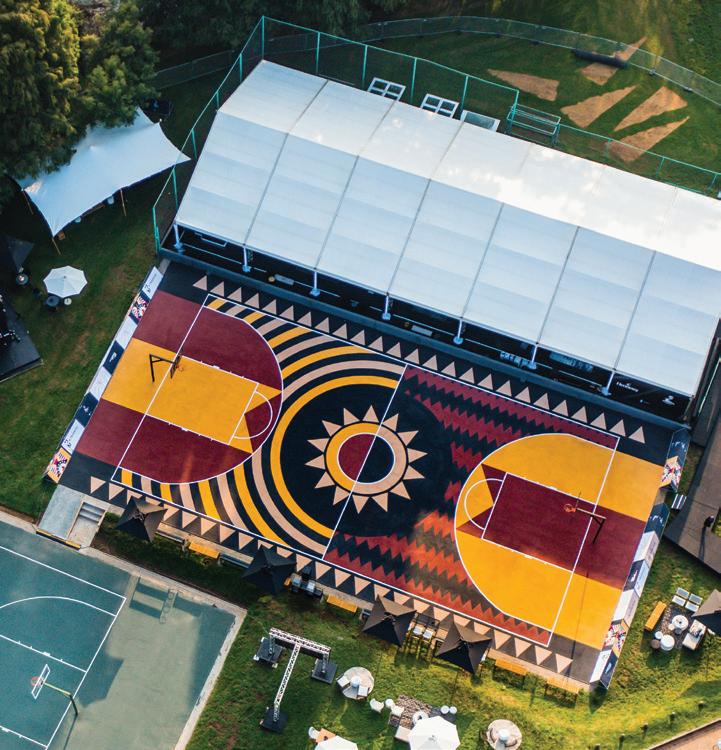
BOTTOM RIGHT: Players on the Ghana Atomic Energy Commission basketball court by Nico Wayo

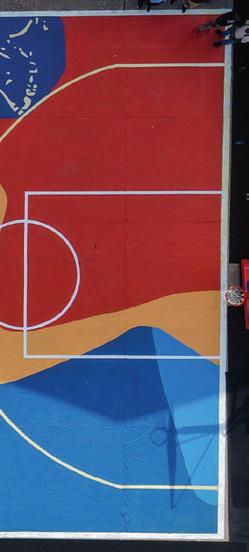
yourluxury.africa

25
COLLABORATION
CLICK: MADE YOU LOOK
MUHOLI, THE ARTISTIC SECRET WEAPON OF OUR GENERATION, IS FLOODING THE CANON WITH IMPORTANT NARRATIVES ONE BOLD SHOT AT A TIME

26 yourluxury.africa
WORDS NTOKOZO MASEKO


yourluxury.africa 27 YOUR ICON
It’s day one of the 10th anniversary of Black Portraiture[s] in Paris, France, and I’m reporting not-solive from the third row in the New York University Paris auditorium. Black Portraiture[s] is the academic conference dedicated to the study of African diaspora in art and culture. To my left, an artistic whirlwind of its own making, visual activist Sir Zanele Muholi, is breezing up and down the auditorium steps. They’re a knighted artist by France, yet they move about with the dedicated spirit of an apprentice reporting for their first day on assignment; this is what passion in motion looks like two decades into a career. Armed with a large-lensed camera, Muholi presses their back against the west wall, trying to fit as much of the room and its people into the frame. At no one’s request, Muholi is making less of themselves to create more room for the act of freezing time between shutter speeds. As the pioneering documentarian continues taking action photos, I jokingly muse to myself that back home, in colloquial Zulu, we’d say, “Hayi uMuholi uyashoota ke manje,” loosely translated as, “Wow Muholi is really, really shooting [taking photographs] now.” I sit with the thought a little longer, particularly with
SHOTS FIRED: OCCUPYING THE CANON WITH A QUEER AGENDA
I’m in Europe at the invitation of Prof Muholi, as the formidable army of queer South Africans they habitually travel with likes to call them. At any given time, Prof travels the world with queer creatives, photographers, journalists, praise singers, medical professionals, sports people and whoever they believe can further the agenda of flooding the canon with an archivable record of queer existence. I’m one of two queer journalists who are part of a group mostly consisting of activists and performers who are also participants featured in Muholi’s retrospective at The Maison Européenne de la Photographie (La MEP). The retrospective marked a notable moment in the artist’s career, with the museum reaching record visitor numbers for LGBTQIA+ works; more than 80 000 people bought tickets to view the exhibition. It is made up of photographic works from Muholi’s Faces and Phases series, which contains 17 years’ worth of portraits of Black lesbian, transgender and gender-non-conforming participants – there are selections from the transgender-focused Brave Beauties series and the prolific self-portraiture series, Somnyama Ngonyama. The common trigger that set off the invention of all these bodies of work hinges on memory and visibility.
“I make photographs because I don’t want to be forgotten,” are words Muholi says more than once, sometimes playfully and others quite seriously. I hear these words on my first night in Neuilly-sur-Seine, just west of Paris, at the generously sized loft where we’re all staying. I hear the words again spoken to the academic audience at Musée du Quai Branly – Jacques Chirac, on day two of the conference. “I’m not here to speak for other people,” they say, “I’m speaking about what I have produced, which is authentic knowledge that’s needed in the canon. There’s a need for us to stress that visual archive that speaks to selves in ways that have never been done in history. I think it’s very important to be remembered.”
Amongst the South African exports on this trip are transgender activist Le Sishi, executive director of Trans Hope Sazi Jali, photographer and activist Charmain Carrol, photographer Lizzy Ziqubu, hairdresser and Faces and Phases participant Bathini Dambuza, journalist Lerato Dumse, director of photography Themba Vilakazi and
the loaded phrase ‘to shoot.’ Shooting points to violence that is most prevalently inflicted by gun. I’m a millennial with a few minutes to spare before the opening of the conference, so I take out my phone and Google: “Who invented the gun?” According to howstuffworks.com, a bamboo tube that used gunpowder to fire a spear was invented in 10th century China and is regarded by historians as the first gun ever made. Gunpowder was invented unintentionally by Chinese alchemists trying to develop a fountain of youth potion. Its potential uses lay dormant for a century until constant invasion of the Song Dynasty’s lands by the Mongols called for the weaponising of this accidental and novel creation. The later invention of the camera also came to be a weapon for photographers; to ‘shoot’ for resistance, for justice, for memory, for survival. ‘Who invented the gun?’ becomes my real-life simile comparatively sizing up a sniper’s deadly delight with Muholi’s silent camera. One shoots to kill, the other shoots to remember.
Muholi’s London-based long-time collaborator and publisher, Renee Mussai. This army of Black and predominantly female/queer voices are the soldiers who wake up every day, whether in Umlazi or Paris, to bear witness on their lived experiences. “It’s important for me to be here because I can speak for myself to express the emotions I was feeling when each portrait was taken; even Muholi who has made the photograph can’t do that,” says Bathini.
At their trigger-happy best, Muholi and this group demonstrate one of the crucial cogs and secret weapons of this generation; uncensored voices serving on the front lines of history and art making. Each living a life of public and private protest, which can sometimes be relentlessly transient and stateless territory, each foraging for new futures that pierce through the multi-hyphenated veil of loaded labels that often divide – labels like Black/female/queer/African.
REVERSING ‘THE GAZE’ WITH SOMNYAMA NGONYAMA
Muholi delivers their intent to be immortalised with powerful poise through the series Somnyama Ngonyama (Hail, the dark lioness in isiZulu), that’s been photographed and exhibited all over the globe. “Portraiture is my daily prayer,” Muholi says of the series that’s entirely self-realised and photographed with only natural light. “Somnyama Ngonyama was intended to be my daily bread. I carry my camera with me all the time. I try to break away from the notion of modelling, studios, statues, stagnancy and fixation. Modelling is about that freeze, photography is about that freeze – I break away from these conventions,” they say of the liberty of turning the lens on themselves. There’s another reversal at play here, and I see it first hand when I fly out of Paris to spend 24 manic hours in Milan, Italy. Fellow journalist Lerato Dumse and I have been deployed by Muholi to go and study the exhibition at Museo delle Culture di Milan
28
yourluxury.africa
yourluxury.africa
‘ We have bodies and we are VULNERABLE human beings. How do we educate people so that they start looking at their bodies as their OWN, rather than as bodies for the OTHER?’

29 yourluxury.africa YOUR ICON
PREVIOUS PAGE: Umkhuseli (The Protector), 2023, in resin, marble dust and bronze, 220cm x 118cm x 111cm
ABOVE: Gqamile, Durban, 2019, Baryta print, 70cm x 56cm
(Mudec). There, a sprawling single storey building that is dedicated to Muholi’s Somnyama Ngonyama swallows us whole, much like it’s ravenous namesake. As Muholi’s unwavering gaze follows us and the European locals walking through the dimly lit space, it becomes most evident that this is an artist who understands the art of war. They know when to reduce themselves – like that time at NYU Paris – but most potently they know when to loom large, delivering reverse shots with technical precision in the direction of that sometimes curious but often problematic gaze. It’s this bold return-tosender energy of heightened blackness, captured with the sensibility of a highfashion magazine, blown up to large scale and transported around the world to be hung on the very walls that once tried to shut us out, that continues to have eyes all over the globe transfixed on the absurd audacity of Zanele Muholi.
EXPANDING THE ARSENAL TO LIFE-SIZED PROPORTIONS
Back home, Muholi’s first solo exhibition with Cape Town-based Southern Guild Gallery ended last month and featured the artist’s largest presentation of new sculptures to date. “This is no longer about me. It is now about every female body that ever existed in my family that never even imagined these dreams were possible,” says Muholi.

Ever the creative chamber that stays loaded, they’ve now turned the narrative of the brutalised female body on its head. Ernest Mancoba’s sculpture African Madonna – which exploded into the canon in 1929 – is responded to 94 years later in the form of Muholi as a queer Black Madonna. The two-metre-high sculpture titled Umkhuseli (meaning the protector), “confronts the failure of law, religion, and politics to adequately address gender injustice, directly referencing the artist’s Roman Catholic upbringing,” the exhibition statement explains.
Muholi the artist, the activist, the archivist is far from violent, and their prophetic wish for a nonviolent existence for women shows in their recent work. Through these works, the pain and politics of the female body, a prominent theme since their first solo exhibition in 2003, now erupts into the poetics of pleasure and freedom with bronzes depicting the anatomy of the clitoris, among other feminine expressions. “At the end of the day, we have bodies and we are vulnerable human beings. How do we educate people so that they start looking at their bodies as their own, rather than as bodies for the other? […] Art becomes the platform in which we can start sharing these narratives,” is their proverbial parting shot. ■

30
IMAGES SUPPLIED C/O HAYDEN PHIPPS/SOUTHERN GUILD; ZANELE MUHOLI YOUR ICON
yourluxury.africa
TOP: Guests at the exhibition opening discuss Muholi’s Being sculpture
LEFT: Umphathi (The One Who Carries), 2023, in bronze, 135cm x 155cm x 62cm
Modern Furniture and Wine
Cape Town, Sunday 17 to Tuesday 19 September 2023
PREVIEW: Monday 11 September - Tuesday 19 September 2023
VENUE: Brickfield Canvas, 2nd Floor, 35 Brickfield Road, Woodstock
CONTACT: ct@straussart.co.za | 021 683 6560 | The auctions will be
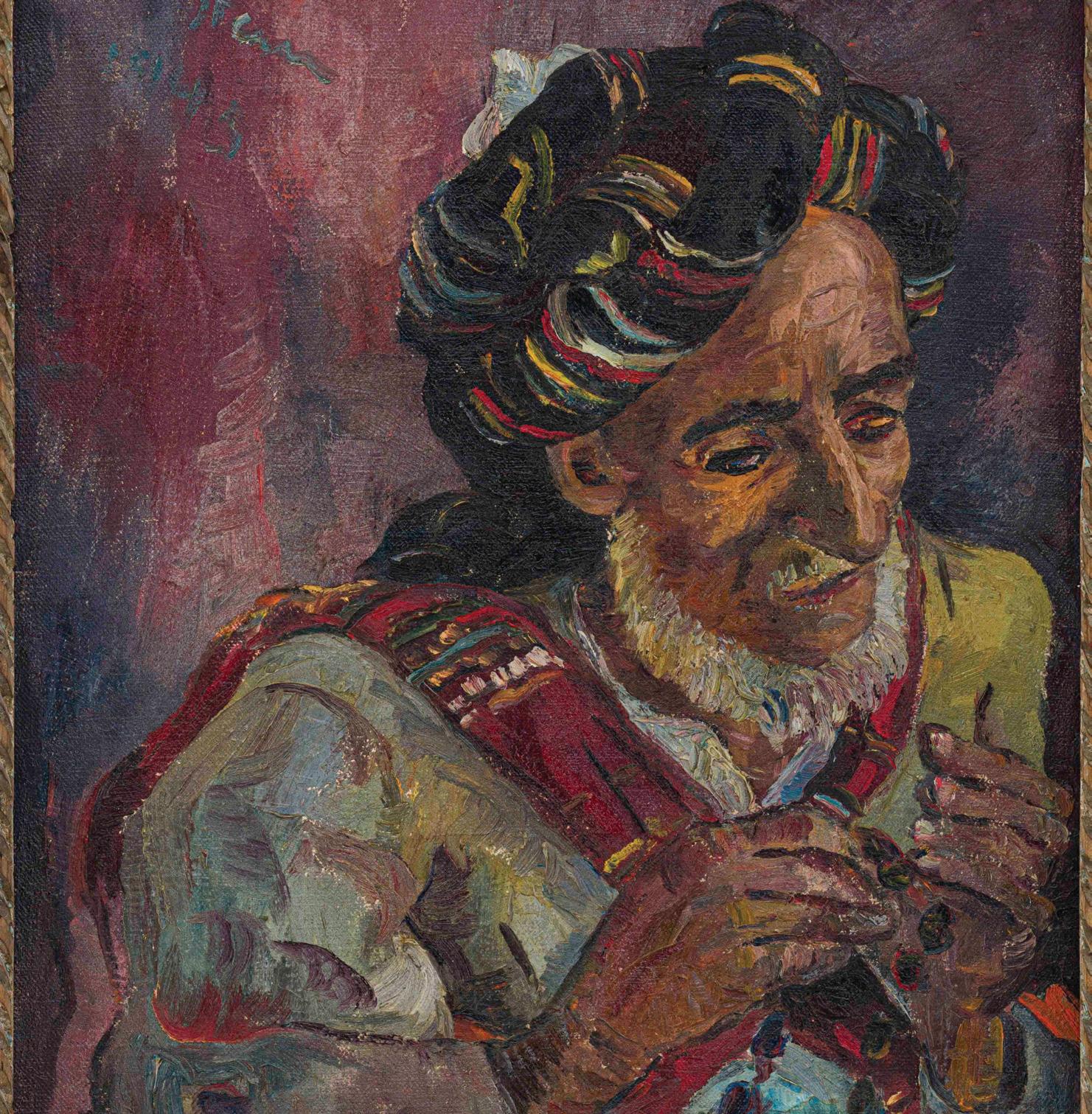
Modern and Contemporary Art, Mid-century
live-streamed on www.straussart.co.za
Irma Stern | Praying Arab (detail) | signed and dated 1945 | 65 by 56cm | R16 000 000 - 18 000 000
AÏSSA DIONE
THE ARTIST WHO IS SAVING ANCIENT TEXTILE TRADITIONS IN SENEGAL FROM ERASURE
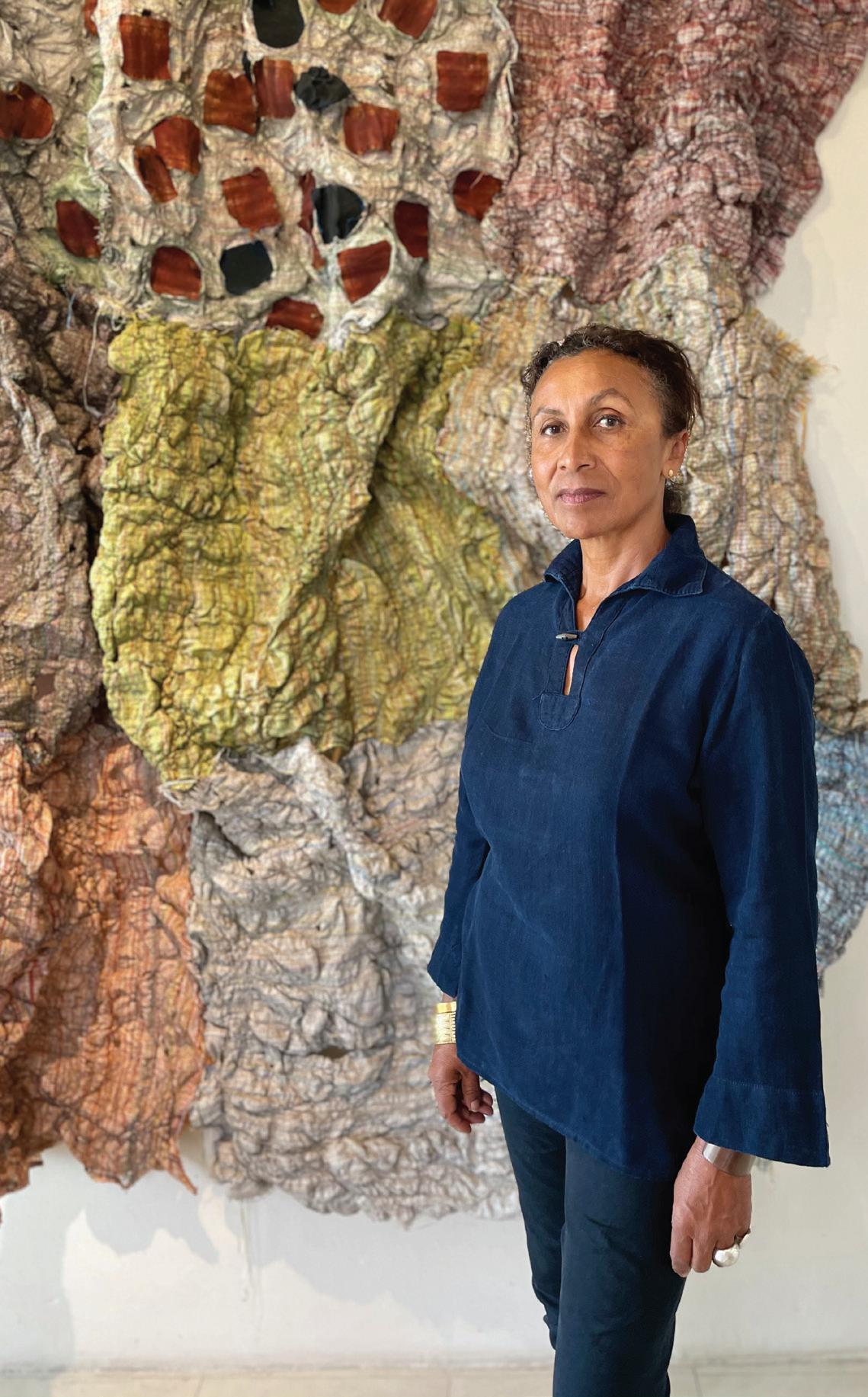
32 yourluxury.africa
Aïssa was always going to end up in the world of textiles; weaving is literally in her genes. Having grown up watching her grandmother’s weaver, she is now widely credited as the mother of Senegalese textiles.
An art graduate from the School of Fine Arts in Chelles, France, Aïssa returned to Senegal as a young woman to launch her career as an artist. After bluffing her way into a corporate decor job, her career took a swift turn into the world of craft and textiles.

Thirty years later, the Aïssa Dione Tissus studio and factory in the small town of Rufisque, near the capital Dakar, has essentially rescued the cotton industry in Senegal. The designs created there have also increased awareness from Paris to Tokyo about the unique beauty of West African woven textiles.
So, how does one take a traditionally crafted fabric and introduce it to the exacting international market that has access to the finest fabrics from all over the world? “It’s very simple,” Aïssa says. “By creating a unique combination of material, fibres and designs and adapting traditional designs to contemporary needs. It is very important to show that traditional know-how and design are able to compete and show strength in the international market.”
The step that had the greatest impact on the fortunes of the Senegalese Mandjak weavers was Aïssa’s decision to widen the traditional loom from 150mm to 900mm. This immediately created a product that could be used to upholster armchairs and sofas. Employing more than 100 men in her factory, Aïssa’s designs are
understated, minimalistic and geometric. She has also combined indigenous cotton with other natural fibres such as raffia and silk to create interesting new designs.

She hopes that her work with the Manjdak weavers will serve as an inspiration to many other areas of African craft. “Indigenous crafts made on the continent need to be elevated to luxury products,” she said recently. Higher quality commands a higher price, and for the Aïssa Dione Tissus studio, that meant relationships with leading luxury brands such as Hermès, Tiffany’s and the Dior Boutique in Saint-Tropez and exhibitions at the leading design fairs in Europe.
The Aïssa Dione Tissus range has recently been expanded to include furniture, making use of indigenous wood from Senegal. Again, Aïssa is making use of local skills and labour and locally sourced wood to create high-end decor pieces that were recently revealed at the Révélations fair at the Grand Palais in Paris.

A driving passion for Aïssa is that all crafts across Africa be seen as real opportunities to create jobs through skills development, export and job creation. “There’s so much scope if crafts are scaled correctly and products are developed in such a way to make them appropriate for the international market,” says Aïssa. It’s also a matter of using local resources to create these designs, instead of exporting the raw materials. “If all raw materials are globally exported and ordinary goods are being imported, jobs are being lost and thus wealth is, as well,” she says.
“It really does not make sense for us to be importing cotton sheets to Africa when
cotton is grown across the continent. We are now making cotton sheets in Senegal.” The idea of creating jobs by linking art, design and industry led her to build the Institute of Craft and Design in Senegal, which she hopes could be a flagship for other African countries. Most recently, Aïssa has been forging a relationship with young artists around the African continent, encouraging them to work with African textiles and to highlight the traditions around them. By introducing a contemporary focus on the craft of textile weaving, Aïssa aims to increase the awareness that textiles can be both an innovative and a sustainable economic activity.
aissadionetissus.com
AÏSSA’S COLLECTION
THE PIECE THAT STARTED YOUR PERSONAL FABRIC COLLECTION: An old indigo tie-dyed boubou dress from Saint-Louis. It is probably more than 100 years old.
THE MOST PRECIOUS PIECE IN YOUR COLLECTION: The same boubou from Saint-Louis. I also have an indigo kente, which is quite rare to find.

YOUR FAVOURITE PLACE TO BUY TEXTILES: Japan. WHERE YOU BUY YOUR BED LINEN? We make our own at Aïssa Dione Tissus.
THE FABRIC YOU MOST LIKE TO WEAR: Cotton.
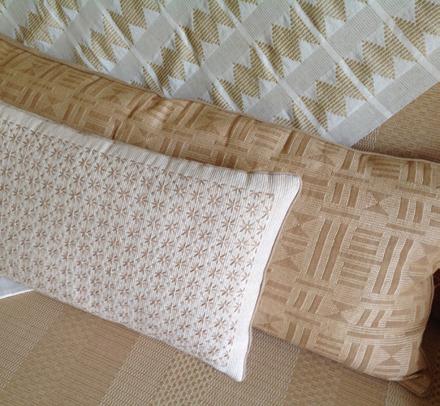
yourluxury.africa 33 IMAGES SUPPLIED
AÏSSA DIONE’S LOVE FOR TEXTILES IS ABOUT SO MUCH MORE THAN DESIGN. IT’S ABOUT PRESERVING A CRAFTING TRADITION, REMEMBERING THE ROLE TEXTILES PLAY IN A NATION’S CUSTOMS AND PROTECTING A VITAL SECTOR OF HER SENEGALESE HOMELAND’S ECONOMY WORDS JACQUIE MYBURGH CHEMALY
YOUR COLLECTOR
SAM NHLENGETHWA REDEFINED
THE SOUTH AFRICAN CONTEMPORARY ART ICON’S INTERPRETATIONS OF SOCIAL ILLS HAVE BEEN APPARENT IN HIS OUTPUT, AND NOW HE TURNS HIS EYE TO AN EARLY INFLUENCE
WORDS SANDISO NGUBANE
In the early 90s, the now renowned South African artist Sam Nhlengethwa was invited to participate in an exhibition held at the Carlton Centre in Johannesburg. Part of the event involved a fashion show and, as his wife Maureen tells it, “The designers asked him to paint on the garments, so he made these lovely paintings that were not in your face, but really complemented the designs.”
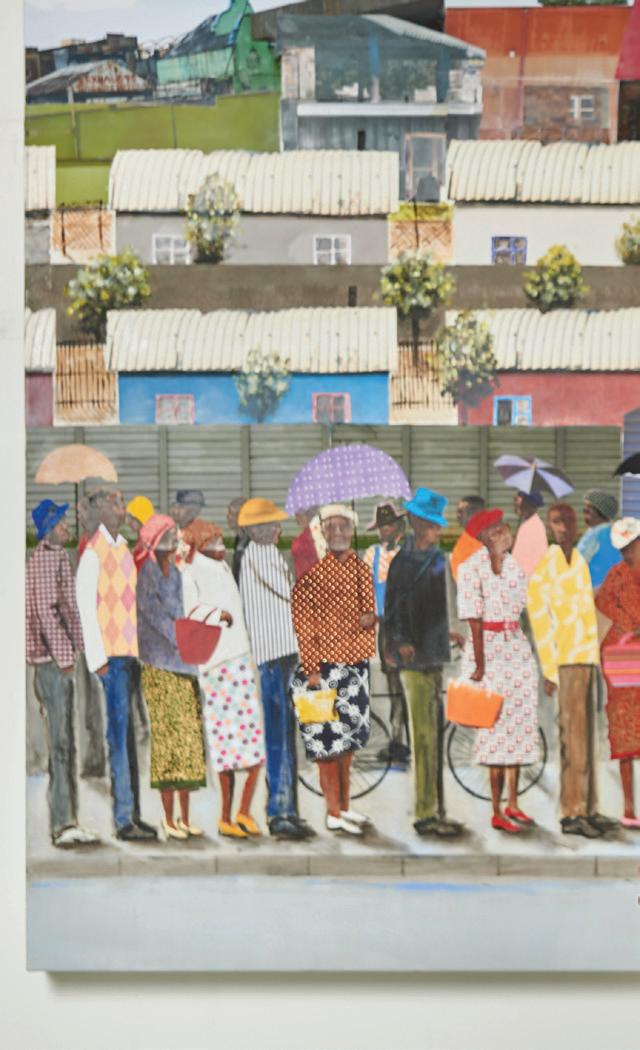
She adds that it was at this show that Bra Sam would buy her a dress that she gracefully offers to find for me to look at. After around 30 years, the white tunic with a streak of yellow paint embossed on the front remains well preserved among other artefacts from throughout Sam’s decades-long career in the arts.
“I wanted to wear this dress, but I didn’t have matching shoes,” Maureen continues. “Sam told me not to worry. He had a pair of sandals that were not gold, but yellowish. They were a nice pair of sandals. He said: ‘You know what I’m going to do? I’ll make the dress match the shoes.’ That’s how it got the yellow streak.”
While the story about the Carlton Centre show seems like nothing more than a sweet memory shared by the couple, it holds a lot of significance for Bra Sam’s upcoming show at Johannesburg’s Goodman Gallery. “The theme is art meets fashion,” he tells me as we settle down in the living area of his Benoni home, part of which currently doubles as his studio. “This is something that I haven’t always been aware is in me, but when I think back, I remember that I come from KwaThema, and there, back in the 70s, I was part of a cultural group called Bayajula. My late friend Malephala and I were the only visual artists in the group. We often created the prints for the costumes that others in the collective were responsible for designing.”
For the November show, Bra Sam is painting figures on fashion runways, among other things – a callback to those formative years when the medium of fashion formed a part of his work.
Many are familiar with the artist’s homages to his contemporaries in the arts and his love for jazz, most recently exemplified by his 2021 exhibition Jazz & Blues at Night, which marked his first London showcase. The series of prints, tapestries and mixed-
media collages featured portraits of jazz greats such as Miles Davis, Oscar Peterson and the late, great Miriam Makeba. Over the span of half a century, the artist has developed a distinctive collage and paint practice that often explores themes like the mundanity of everyday existence with a flair for social commentary that might be easy to miss by a passive observer.
I ask him about two of his works, specifically Waiting for an Answer and Waiting for Green from his 2018 exhibition titled Waiting. “Somebody at the exhibition said that they are typical South Africa,” Sam says with regards to the works, which reflected on the many ways in which we find ourselves occupied by the state of being. “We have long queues at the Home Affairs office. At taxi ranks there are long queues. So, sometimes I put some humour into the work. For example, in Waiting for an Answer, a guy is proposing and literally waiting for an answer. There was also a print with a guy sitting alone at a pub waiting for the last round. I allow myself not to be consumed by too much seriousness.”
I suggest that these works actually depict some social ills. “As a society, we are still waiting for this democratic government to deliver on its promises. People wait at taxi ranks because we don’t have proper public transport. It’s a pity because when I did this show, loadshedding was not as prominent as it is now. I could have added that to the mix,” he quips. “This is us,” he adds. “I don’t exaggerate the way we live in South Africa. I interpret it.”
Adding to this social commentary that permeates his work, his upcoming November exhibition will incorporate a procession of models dressed in garments by the renowned designer of the
34 yourluxury.africa
first Madiba shirt, Sonwabile Ndamase. The models will all be people with albinism. “I want to remind everyone that those with albinism are part of us. Some of my questions are around what we are doing, as a society, to make them feel like they are a part of society. What is our government doing to make them feel a sense of pride?”
While over the years, in South African fashion specifically, we’ve seen instances of representation for this community in the form of models like Thando Hopa and Sanele Xaba, it’s often difficult to not perceive this as tokenistic at a time when inclusion is much bandied about in the mainstream media, but there is no tangible change in society itself. Sam hopes to add to the conversation about the need for change.
Similarly, as the 68-year-old ponders what his own legacy will be, he speaks about his enduring desire to create a centre for the creative arts in KwaThema, his hometown. He notes what a struggle it has been to get commitment from government and other potential stakeholders in his quest to build the centre. It would add to an already illustrious legacy of mentorship in the arts as a founding member of The Bag Factory, a non-profit contemporary arts organisation in Newtown, Johannesburg, where he also sponsors studio space for emerging female artists. “That’s my vision. To leave behind a centre where young people can gain early access to the arts in a way that my generation did not.” ■
LEFT: Artist Sam Nhlengethwa
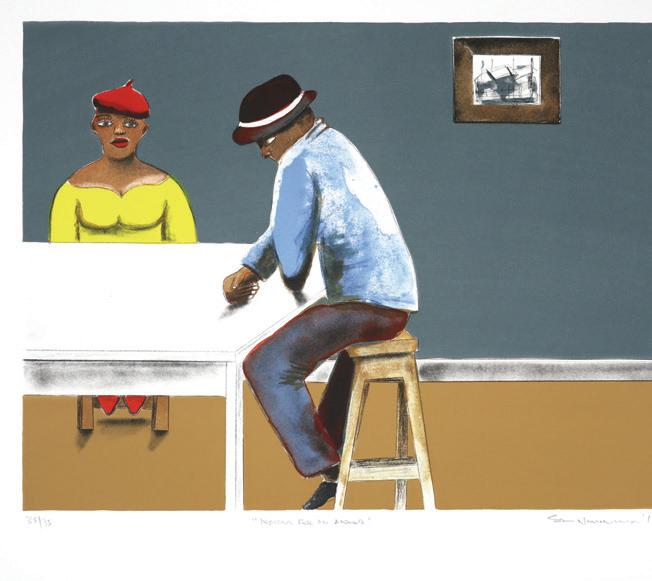
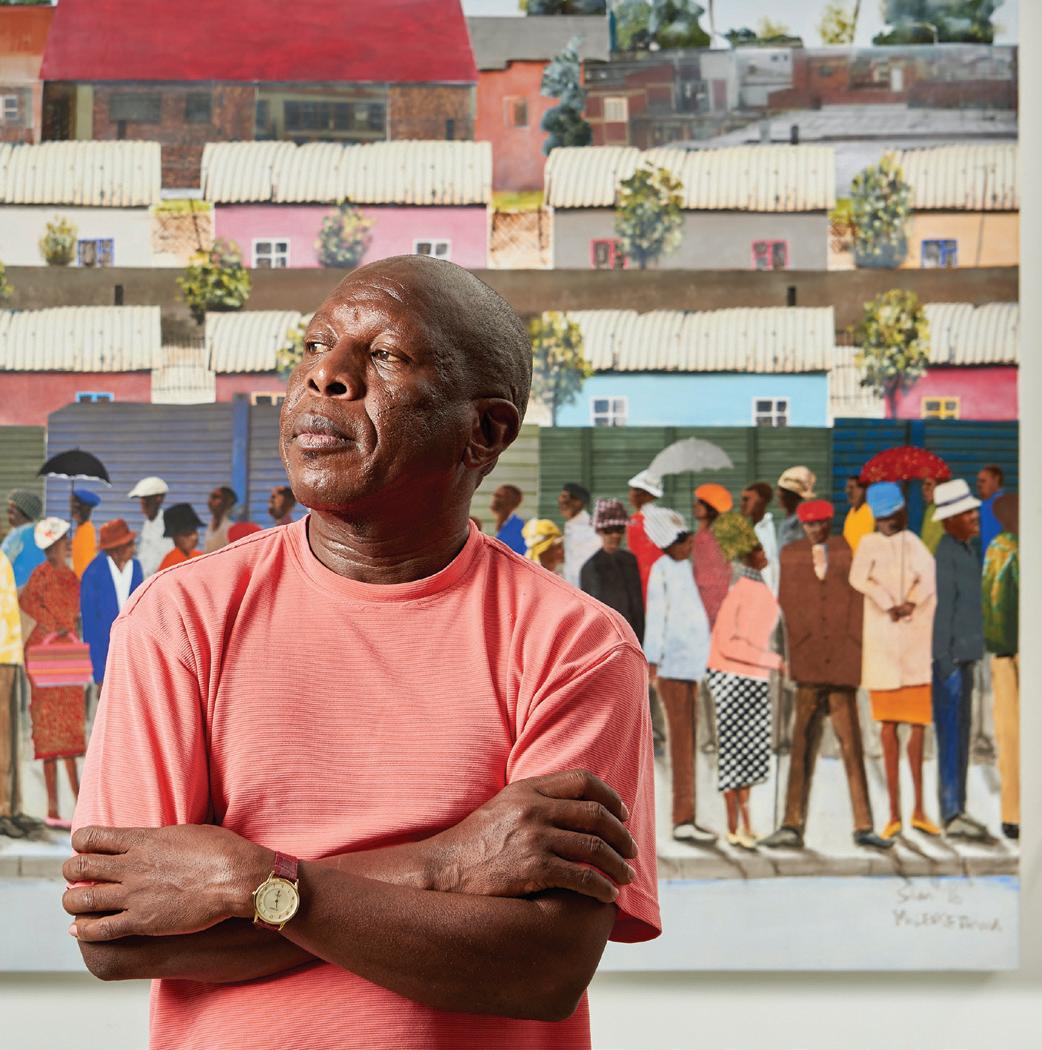
BELOW: Waiting for an Answer, 2018, colour lithograph, 50cm x 65cm, edition: 35
BOTTOM: Sam working on his upcoming exhibition in his home studio

35 yourluxury.africa YOUR PIONEER IMAGES SUPPLIED C/O SAM NHLENGETHWA AND GOODMAN GALLERY
‘
’
I don’t exaggerate the way we live in South Africa. I INTERPRET it
JAPAN’S ART ISLANDS

AN AFRICAN ART LOVER’S PILGRIMAGE TO THE EAST
WORDS AND IMAGES DION CHANG
36 yourluxury.africa
My heart skipped a beat when I first caught sight of Yayoi Kusama’s giant red pumpkin as the ferry entered Miyanoura Port, the main entry point to Naoshima Island – one of three art islands in Japan’s Seto Inland Sea.
As the ferry docked, another public art installation came into view: the Naoshima Pavilion. Resembling a small iceberg that has run aground, this sculpture is made up of 250 stainless steel mesh triangles and is large enough for visitors to step into. I had finally made it to one of Japan’s best-kept tourist secrets: the art islands.
The three art islands – Naoshima, Teshima and Inujima – are amongst the cluster of almost 3 000 uninhibited islands in this inland sea. The art islands was a passion project of Japanese billionaire Soichiro Fukutake. Horrified by the environmental damage caused by toxic waste from the copper smelting industry to the formerly pristine islands, he approached renowned Japanese architect Tadao Ando in 1988 to help him fulfil his vision of transforming the desolate and economically crippled islands with art and tourism.
It was a wise choice. Tadao’s minimalist concrete architecture has been described as having a "haiku effect” – emphasising nothingness and negative space to represent the beauty of simplicity. While some view his architecture as brutalist, his buildings somehow sit lightly in their natural surrounds on the islands. For example, the Chichu Museum on Naoshima is built mostly below ground level to coexist with the natural scenery, rather than dominate it above ground.
OPPOSITE: Yellow Pumpkin by Yayoi Kusama on the grounds of Benesse House on Naoshima
LEFT:
The white dome resembling a water droplet at Teshima Art Museum

BELOW:
The interior of Benesse House Museum
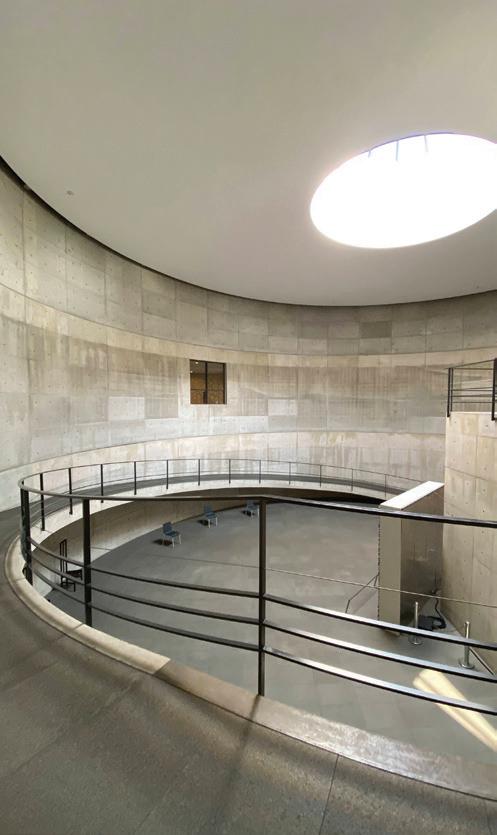
BELOW: The Naoshima Pavilion at Miyanoura Port

37 yourluxury.africa YOUR TRAVEL
‘The ART ISLANDS stole my heart’
Soichiro, who is not a fan of “white cube galleries”, wanted to create harmony between art, nature and architecture, so most of the installations and galleries on the islands are site specific. For anyone who appreciates art, this is indeed an immersive experience.
The centre piece on Naoshima has to be Benesse House, which doubles as a museum and a stunning boutique art hotel. This museum is home to some iconic works of art such as The World Flag Ant Farm by Yukinori Yanagi, which I first saw at the Tate Modern in London in the 1990s.

I had only planned to visit Naoshima island – my trip already included Tokyo, Kyoto and Osaka – but then I stumbled across a New York Times article titled The 25 Travel Experiences You Must Have. On the list at number 17 was Teshima Art Island and, in particular, the Teshima Art Museum, a white dome meant to resemble a water droplet on glass, with two oculi open to the sky. I was intrigued enough to make the additional journey, and I’m so glad I did. This proved to be the highlight of my art island experience.
On entering the dome, you are hit by its aura. A zen-like space with a smooth, concrete floor where spring water bubbles up intermittently from 168 tiny holes. These rivulets of water move along the Teflon-like surface like liquid bullet trains, pooling then separating, and eventually draining into strategically placed holes. The sound of the water draining is amplified by the dome’s acoustics, as if you have your ear to a plug hole. It’s mesmerising, and visitors settle on the floor to observe them up close.
The NY Times writer said about this installation: “So many people, from billionaires to meditation teachers, have told me this is the single most moving place they have ever been”. I would agree. It will stay with me for as long as I live.
The only regret I have is that I didn’t have time to visit Les Archives du Couer by Christian Boltanski, who recorded thousands of heartbeats from people all over the world. The installation is a tunnel with a wall of speakers playing a random person's heartbeat, with a light flickering in sync. There is even a recording studio where you can add your own heartbeat to the collection.
It's a good reason to make a return trip. Getting to the art islands is not easy, but I would happily make the return journey. The art islands stole my heart; I might as well leave a trace of my heartbeat there. ■
Dion Chang is the founder of Flux Trends. For more trends, visit fluxtrends.com.
LEFT AND FAR LEFT: Art on the grounds of Benesse House Museum
BELOW LEFT:
The most popular mode of transport on the islands is a bike
BELOW:
A beautiful local bus on Naoshima island

GETTING THERE … AND LESSONS IN HINDSIGHT
• From Kyoto, the journey involved two shinkansens (bullet trains) to Okoyama, then a local train (switching trains mid-journey) to the port of Uno, a ferry ride to Naoshima, followed by a local island bus to your accommodation.
• Plan your stay (I stayed two nights on Naoshima) around the ferry schedule, which is infrequent – especially the ferry between islands. If you don’t want a rushed experience, I recommend three nights on Naoshima with a full-day trip on Teshima.
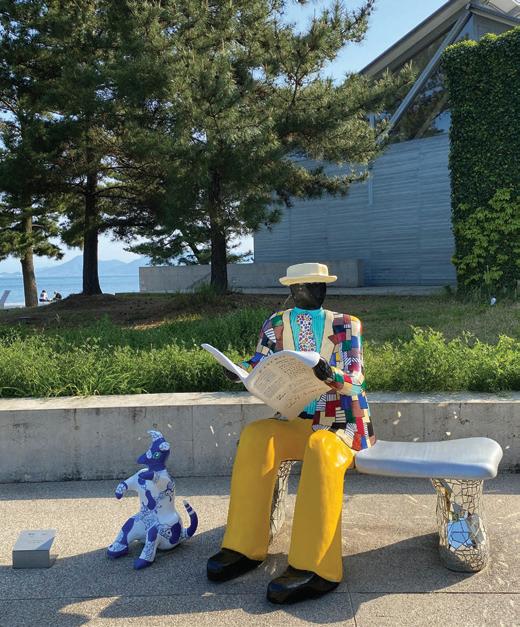

• Cycling around the islands to see the installations is encouraged and there are numerous rental companies. Some hotels provide complimentary bicycles for guests.
• Restaurants are limited, but there are family-run eateries that make delicious meals. Don’t expect a shopping mecca – these are remote islands, and the art immersion beats any retail therapy.
38
yourluxury.africa
YOUR TRAVEL
SWATCH’S LOVE AFFAIR WITH ART BRINGS
LIFE TO NEW MASTERPIECES FOR THE WRIST
WHEN THE WORLDS OF SWATCH AND ART COLLIDE
Since March 2023, Swatch has been celebrating the release of a new wave of watches in its Art Journey Collection. According to Carlo Giordanetti, CEO of the Swatch Art Peace Hotel in Shanghai, art is one of the biggest pillars of the brand. The brand’s desire to democratise the art world by collaborating with leading museums to adapt some of their famous artworks for the wrist has produced some incredible timepieces over almost four decades, each new release more exciting than the last.
This year’s collaborations are with the Museum of Modern Art (MoMA), Fondation Magritte, Louvre Abu Dhabi and Le Gallerie degli Uffizi. Swatch X MoMA celebrates pop art, marking the 100th anniversary of Roy Lichtenstein’s birth with watches that showcase his work in Reverie and Girl with his characteristic palette of primary colours, Ben-Day dots and comic-inspired pop-art style.
Swatch X Magritte is a tribute to the surrealist artist’s 125th birthday. René Magritte is known for his imaginative
aesthetic and evocative symbols (the bowler hat and pipes, among others) and his incorporation of wordplay. Typically, “nothing is as it seems” in the selected artworks Le Fils de L’Homme and La Trahison des Images. “His unexpected senDe of humour is very Swatch,” says Carlo.
Swatch X Le Gallerie Degli Uffizi celebrates nature and femininity through the work of Renaissance supremo maestro Sandro Botticelli – Nascita di Venere (The Birth of Venus, circa 1486) and Allegoria della Primavera (Allegory of Spring).
Meanwhile, Swatch X Louvre Abu Dhabi unites the energy of The Great Wave Off Kanagawa by Japanese artist Katsushika Hokusai on the front of the watch with a majestic Astrolabe flat projection of a night sky by Muhammad ibn Ahmad AlBattûtî on the back.
The Swatch X Jean-Michel Basquiat Collection, which marks the last of the Art Journey Collectio, launches this year. This release pays tribute to the fearless New

York artist who shattered conventional artistic boundaries and played a pivotal role in elevating street art from sub-culture to critical acclaim.
Jean-Michel’s legacy stands as a testament to his immense influence. Regarded as one of the most impactful artists of the 20th century, his creative journey spanned the late 1970s through the vibrant 1980s, tragically concluding in 1988 at the young age of 27.
“We love Swatch and are so excited to see this thoughtful curation of artworks translate into such fun and vibrant watch designs. This is one of those classic collaborations which really hits the mark for us,” says Jeanine Heriveaux of Basquiat Estate.
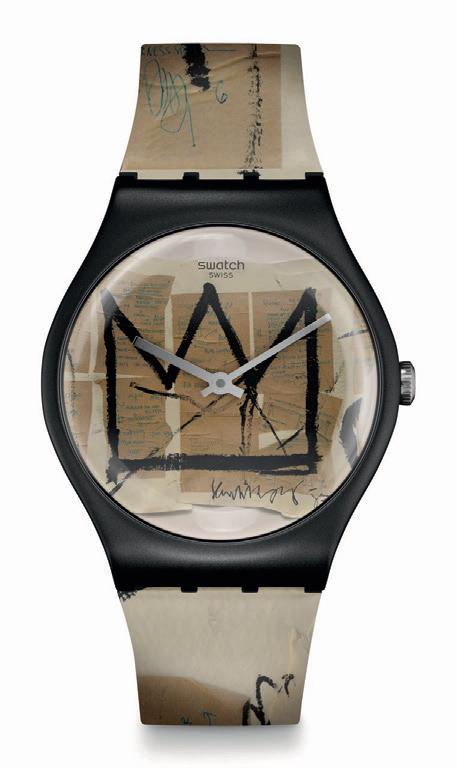
Collectors will love the Swatch X JeanMichel Basquiat Triptych presented in special boxes. The watches feature detail from the artworks Untitled, Hollywood Africans and Ishtar, and capture the artist’s compositions and typically feature striking images. swatch.com; sign up to our newsletter: yourluxury.africa/subscribe
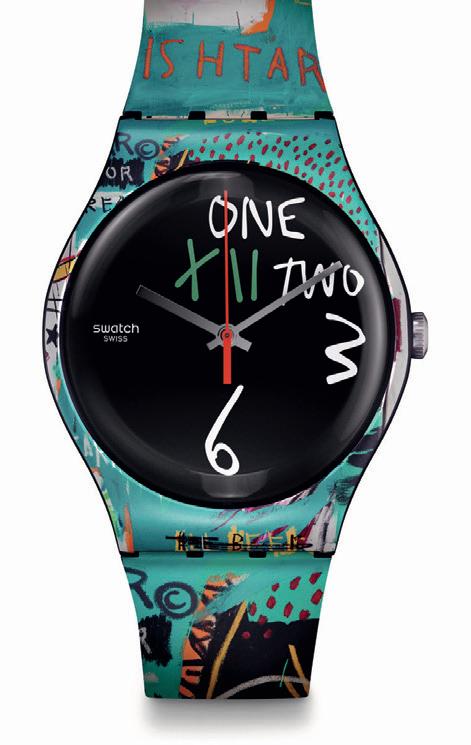
39
COLLABORATION WORDS DEBBIE HATHWAY IMAGES SUPPLIED
yourluxury.africa

40 yourluxury.africa
AS CAR BRANDS COLLABORATE WITH ACCLAIMED ARTISTS AND NEW TALENT JOINS ART CAR PROGRAMMES, A THRIVING CONVERGENCE OF THE ART AND AUTOMOTIVE WORLDS IS TAKING PLACE

WORDS SONY THOMAS

creityativ REVVING UP
yourluxury.africa 41 yourluxury.africa YOUR WHEELS
Cars and art have a fascinating relationship. For several decades now, automakers have collaborated with renowned artists to create unique art cars, transforming vehicles into works of art. The phenomenon of art cars, which gained prominence through initiatives like BMW’s Art Cars from the 1970s, continues to transform cars into rolling canvases of artistic expression.

BMW’s extraordinary tradition of art cars has seen artists from diverse disciplines express their creativity on the brand’s vehicles. Notable contributors such as Andy Warhol, Roy Lichtenstein, Jeff Koons and David Hockney have left their artistic imprints on the German brand’s cars. As BMW’s Art Car legacy continues, the excitement grows with the recent announcement of a collaboration with Ethiopian artist Julie Mehretu for the 20th BMW Art Car. Selected unanimously by an international panel, Julie will have the artistic freedom to design the “rolling sculpture”. The BMW M Hybrid V8 Art Car will then race in the 24 Hours of Le Mans in June 2024, continuing the tradition of artists contributing to BMW’s racing heritage.
Born in Addis Ababa in 1970, Julie’s unique artistic style is influenced by her diverse educational background, including time spent in Dakar, Senegal. Her paintings, prints and drawings explore the intersections of history and contemporary experiences, depicting social behaviours and the psychogeography of space. Beyond the creation of the art car, the partnership between BMW and Julie fosters cultural collaboration and civic engagement across cities in Africa. The project’s outcome will be presented alongside the 20th BMW Art Car at the Zeitz Museum of Contemporary Art in Cape Town in 2025.
Although not art cars per se, Bentley’s Art in Motion proposition is another example that reflects a car brand’s commitment to combining automotive craftsmanship with art. As a part of the programme, Bentley has collaborated with acclaimed artists and designers alike to produce and promote unique artworks inspired by the key attributes and distinct design language of the marque’s vehicles. The Crewe brand’s collaborations with artists Ricardo Gonzalez, Mikael B and Laci Jordan all got noticed after their resulting artworks were recently auctioned for charity in New York.
The latest project in Bentley’s Art in Motion programme is a strategic partnership with Dominic Ciambrone, popularly known as The Surgeon in the customised-shoe industry. Together, they have introduced an exclusive line of Bentley-inspired sneakers, a limited edition reserved solely for the clients and collectors of Mulliner. These sneakers showcase Bentley’s craft signatures, featuring intricate diamond quilting and delicate cross stitching, complemented by The Surgeon’s signature skull and scalpel monogram.


In addition to the sneaker line, Bentley also unveiled a one-of-a-kind Flying Spur Hybrid curated by The Surgeon during design week at Art Basel Miami a few months ago. The Flying Spur Hybrid X The Surgeon boasts an impactful duo-tone paint finish of anthracite over anthracite satin, highlighted with satin bronze accents. Inside, linen and beluga upholstery with bronze stitching enhances the walnut veneer-adorned cabin featuring the signature skull and scalpel motif. Bentley’s knurled finish adds tactile interest.
The convergence of the automotive and art worlds has always offered a fresh perspective on design possibilities, elevating cars from mere modes of transportation to actual cultural artefacts. Projects like BMW’s Art Cars elevate the vehicles as canvasses for artistic expression, while Bentley’s Art in Motion programme seamlessly integrates art, fashion and automotive design. With talented artists such as Julie Mehretu now stepping into the arena, the future of art cars looks incredibly promising, and we can look forward to inspiring works that transcend mere transportation and leave a legacy for generations to come. ■

42 yourluxury.africa YOUR WHEELS IMAGES SUPPLIED
FAR LEFT: Julie Mehretu will collaborate on BMW’s 20th Art Car LEFT AND BELOW: Bentley’s collab with Dominic Ciambrone, aka The Surgeon
SOUTH X WEST
TWO CHEFS CHAMPIONING AFRICA THROUGH CREATIVITY AND INGENUITY
BASQUE CULINARY WORLD PRIZE RECIPIENT, CHEF FATMATA BINTA, AND THE AWARD-WINNING
CHEF
WANDILE MABASO ARE DRIVING CHANGE THROUGH THEIR ITERATIONS OF AFRICAN COOKING
WORDS STEVE STEINFELD
CHEF WANDILE MABASO

The celebrated chef, who has trained under the likes of Alain Ducasse, celebrates South African ingredients through his expression of fine French haute cuisine at his Bryanston restaurant, Les Créatifs Restaurant.
His latest project is the recently launched Mabaso Langa Foundation – a concept three years in the making – which has seen the chef team up with visual artist Azael Langa as co-founder.
The two creative forces aim to upskill South African artists –be it in the culinary arts, visual arts or otherwise – through the foundation. “We love the work we do across different disciplines, but what we’re most passionate about is skill’s development and empowerment,” says Wandile.
Rather than focusing on individual endeavours, the chef and artist have found strength in their collaboration. By taking the food, art and culture of South Africa and displaying it in one room, they can drive creative, meaningful and impactful conversations. “Good food sells art, good art inspires good food, good fashion makes good service, good music creates ambience and so on,” explains the chef.
The foundation’s aim with these curated experiences – which are rooted in South African culture – is to celebrate the country on the world stage. Though the foundation began with three activations at Steyn City, they’re now looking to take it abroad, with plans in place to visit France, Dubai and the USA with these unique experiences.
From there it’s about giving back, with both chef and artist taking on roles to further their respective industries by giving opportunities, knowledge and guidance to fellow creatives. “We want to be able to give opportunity, training, internships and exposure to the recipients,” explains Wandile, adding, “we want them to go on to open their own establishment and create jobs.”
This is an extension of Wandile’s ongoing efforts and work since opening his restaurant which, aside from its fine cuisine, dynamic young team and celebrity clientele, is known for the beautiful works of young African artists on its walls – with many a sale made to dining patrons.
When discussing the emerging African artists he has his eye on, he mentions the likes of co-founder Azael Langa, Thulani Ntlapo, Greatjoy Ndlovu, Arlindo Maunde and Solomon Omogboye. All exceptional talents who have work displayed in his restaurant.
CHEF FATMATA BINTA
Chef Binta is a culinary tour de force who has been making waves with her recreation and reinterpretation of the cuisine of her nomadic Fulani people of the Sahel. In line with her heritage, her dining concept is nomadic too.
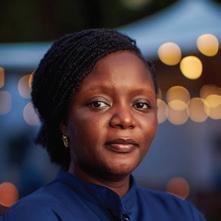

Called Dine on a Mat, she traverses the globe introducing the unique cuisine to the world through various popups and collaborations with some of the best international chefs. While doing so, Fatmata has also championied the West African grain fonio – a nearly lost millet which she uses generously in her cooking. “It makes no sense that, in African supermarkets, we have rice grown in Asia on the shelves, but not our locally grown fonio,” she says.
In addition, her passion project, the Fulani Kitchen Foundation, allows her to work towards empowering Fulani women in Ghana and through West Africa. It’s this work that led to the her being awarded the Basque Culinary World Prize 2022 – prestigious recognition given to chefs who are transforming society through food and who work with the United Nations Food and Agriculture Organisation to launch its Global Chefs Challenge. She’s also the winner of The Best Chef Awards Rising Star 2021, proving this is one powerhouse chef who is just getting started.
A CROSS-CONTINENT COLLABORATION
It was an incredible evening of African cuisine at Les Créatifs Restaurant, when chef Fatmata joined chef Wandile in the kitchen for a series of evenings which would see the meeting of South and West African cooking.
Together, the two chefs served up a stellar multi-course dinner which merged the flavours and ingredients of South and West Africa.
The dinner, served in front of an impressive multi-medium artwork by Azael – an African riff on The Last Supper –was a true celebration of Africa’s creativity, ingenuity and talent. The collaboration forms part of the global Amex for Foodies series, which sees American Express curate exclusive culinary experience with world-renowned chefs and mixologists.
This marks the second collaboration between the two chefs, with both hoping to work together in the future. ■
43 yourluxury.africa
IMAGES SUPPLIED
YOUR FOOD
DESMOND MABUZA’S PRESTIGIOUS NEW ESTABLISHMENT, SIGNATURE UMHLANGA, SETS SAIL THIS MONTH WITH ARTFUL INTERIORS BY COCOON LIFESTYLE

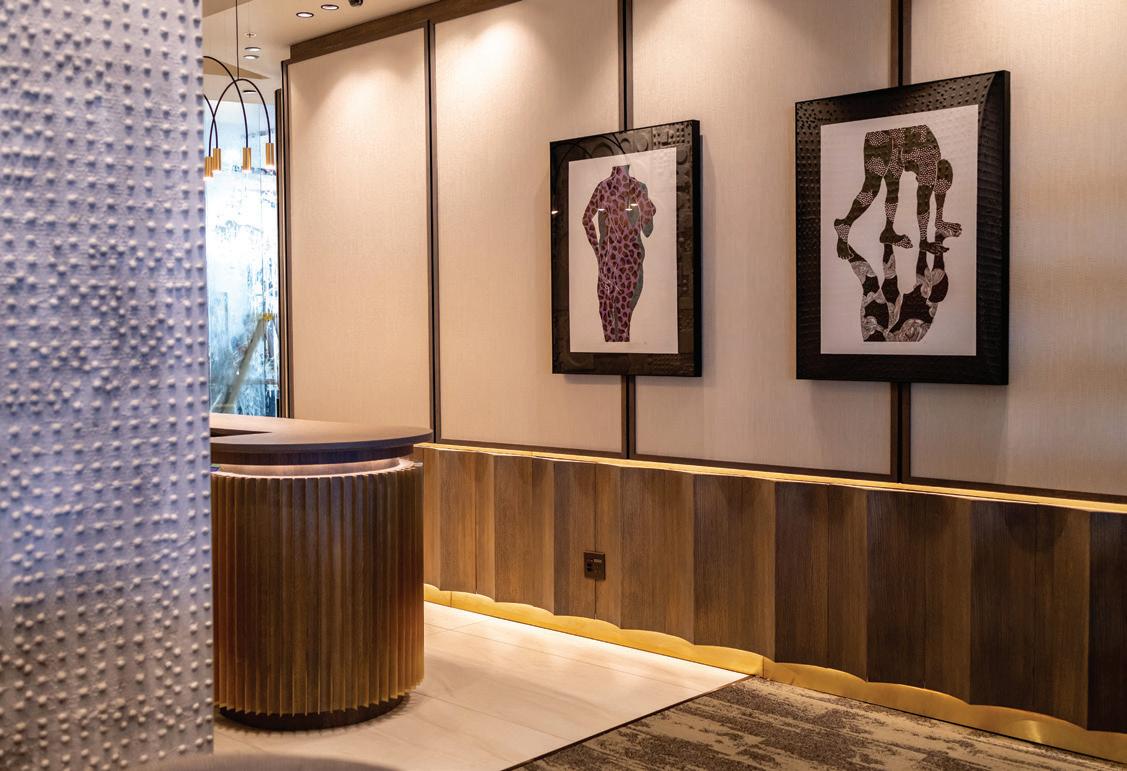

CELEBRATE LIFE in Umhlanga
44 yourluxury.africa
yourluxury.africa
In days gone by, the luxury and opulence of ocean travel would lure the who’s who of high society out of their mansions and onto grand yachts and cruise liners. Days would pass by in a haze of socialising and leisurely deck pursuits like shuffleboard and tenniquoits, while evenings were a shimmering display of multiple-course dinners and the latest fashions.
Thanks to Bilala Mabuza, founder and creative director of Cocoon Lifestyle, the ethos and aesthetic of fine dining on an ocean voyage has been revived at Signature Umhlanga, Desmond Mabuza’s new restaurant offering located within the Oceans Mall in Umhlanga, Kwazulu-Natal. Bilala and her team were inspired by the luxury of travelling on a yacht when it came to the interior design of Desmond’s new establishment, which opened at the same time the Signature Restaurant Group celebrated its 14th anniversary. The interior design and layout, as well as the careful selection of furniture and art and the specific location of Signature Umhlanga, all represent a clear and exciting evolution for this distinctive restaurant group.
Step through the front door of Signature Umhlanga and you’ll be instantly mesmerised by the floor-to-ceiling glass windows, beyond which you almost expect to see an endless horizon where ocean meets sky. Structural columns dotted throughout the space have been cleverly treated to unobtrusively blend into the dining room. If you catch yourself thinking of Gerhard le Roux’s Moses Mabhida Stadium nearby and some of the late Iraqi-British architect Zaha Hadid’s work, you’ll have figured out that Bilala and the Cocoon Lifestyle team drew on the designs of these iconic names in their creative approach for Signature Umhlanga.
Curved oak panelling, enhanced with soft recessed accent lighting within the private dining room space, and the shape of the counter at the restaurant’s entrance, evoke the ocean-going glamour on the Queen Mary in the 1920s and 1930s when design detail and wood treatments were high trends. The maritime art deco-inspired wood panelling is further enhanced by the placement of a number of forest green velvet bucket chairs and fabulously detailed statement walls in swirling black, white and grey patterns. The only thing missing is some gentlemen in dinner jackets puffing on cigars and flapper girls sipping cocktails in sequined dresses.
As the layout of Signature Umhlanga was already defined, Bilala realised she needed to approach the structural walls as stand-alone design highlights and artistic elements. To this end, she
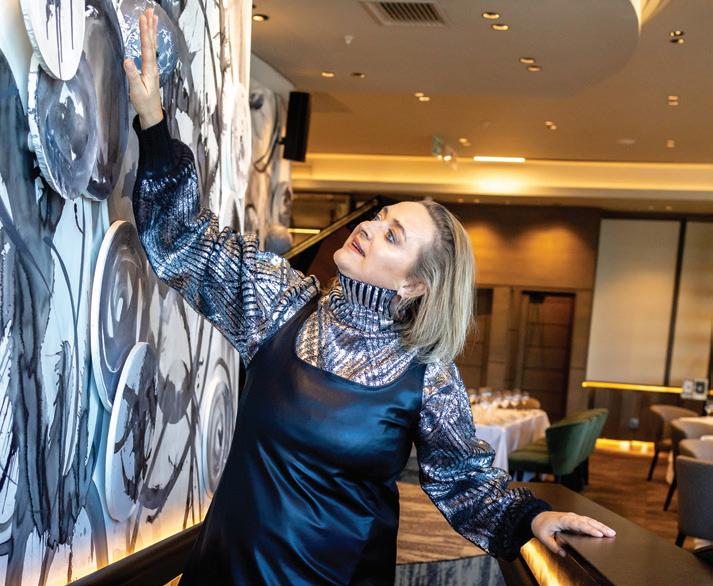
partnered with T&R Designs and Effects by Elaine, who painstakingly applied wood, cement tissue and oil in layers to the perimeter walls beyond the grand piano and at the entrance to evoke the style of mid-century modern concrete friezes by artists such as William George Mitchell. These works, says Bilala, were “a labour of love from the art team who worked tirelessly to bring my vision to life.”
Art, the way it accents interiors and the importance of local artists to Desmond and Bilala play a critical role within the Signature Group. Works by leading local artists and sculptors were chosen to elevate the cultural and artistic credentials of this space, adding a layer of depth and historical sentiment. These include paintings by Trevor Coleman, Thokozani Mthiyane, Toni Bico and Lionel Murcott. KwaZulu-Natal-born contemporary artist and activist Sthenjwa Luthuli’s paintings of dancing, headless figures have pride of place at the restaurant’s entrance. Sthenjwa’s practice calls attention to the ability of education and functional state infrastructure to enable and empower citizens, so the placement of his works at the threshold of Signature Umhlanga carries special significance.
Also at the entrance and holding special meaning is a beautifully stylised figure by artist Noah Maubane, titled Humble Finds a Home. This expressive work speaks to the journey of the Signature Restaurant Group and Desmond Mabuza’s legacy of entrepreneurship that has brought him to Umhlanga to create a new home for lovers of fine dining, bespoke design and local art.
signaturerestaurant.co.za ■
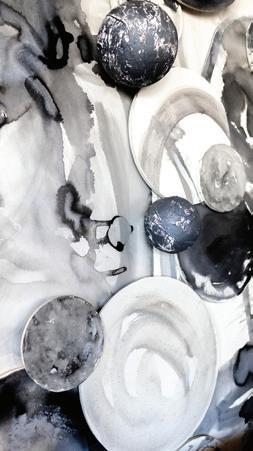
yourluxury.africa

45
COLLABORATION
SAFE AS HOUSES
THE WORLD OF FINE-ART STORAGE AND CONSERVATION CAN BE BEWILDERING FOR CONNOISSEURS AND CAREER COLLECTORS, NEVER MIND THOSE OF US JUST STARTING OUR OWN LITTLE STOCKPILE OF FAVOURITES. WE REACHED OUT TO THE EXPERTS TO EQUIP OUR READERS WITH THE BEST ADVICE ON MANAGING THEIR PRECIOUS ARTWORKS
 WORDS MATTHEW MCCLURE
WORDS MATTHEW MCCLURE
The art world abounds with storage and conservation horror stories. Over a glass of wine at an opening, you’ll hear about that buyer who loaded up priceless marble statues on the back of a truck and inadvertently decapitated one of them on the highway, or a guy who opted for the cheaper packaging and ended up with the residue of bubble wrap on the surface of his Old Master oil. It’s enough to keep you up at night if you’re thinking of moving, storing or conserving your valuable artworks.
So, what should you do if a favourite aunt passes on and leaves you a Klimt? Or if you’ve finally managed to get your hands on a Hirst and haven’t the faintest idea of the correct preservation, storage or display conventions? If you want to pack it away and let its value slowly accrue sans taxes, you could always try a free port. Located in taxfriendly countries like Switzerland and Singapore, free ports were originally intended as temporary storage for goods in transit, but savvy collectors looking to avoid customs duties stash their art, jewels and wine in these highly secured warehouse spaces. Free ports ensure that your art is hidden from prying eyes and grubby fingers in a climate-controlled environment. However, if you’re a purist and believe that art should be shared, the best advice is to contact a professional art agency, museum, auction house or gallery to inspect the piece on site. They will evaluate its condition and value, and determine the best space for it to be displayed or stored away from harmful UV light, dust and damp.
Commercial galleries (where storage space comes at a premium) often only possess temporary storage rooms where works are held before either going on sale or being shipped to a buyer.
Stephanie Le Roy, assistant curator at Everard Read and CIRCA Galleries in Johannesburg, believes that just because an art gallery isn’t responsible for the long-term care of an artwork post-sale, it doesn’t mean it shouldn’t commit to providing buyers with the best advice for long-term care. “I feel it’s the gallery’s responsibility to give clients the correct information about maintaining their works,” Stephanie tells me. Knowledge of how art that incorporates sensitive organic matter such as wood or metal responds to changes in light, moisture and climate plays an important role in ensuring its longevity. Stephanie believes that this is a critical component of advice that galleries like Everard Read should impart to their customers once a sale
goes through. “A few of Brett Murray’s sculptures, for example, can be displayed outside,” says Stephanie. “But the patina of those works is sensitive, so ultimately the gallery can give a client all the information, but then it’s up to them to take care of the work.”
Jean le Clus-Theron, senior art specialist at Strauss & Co, has seen many a valuable painting pass through the doors of this premier auction house since she joined the company in 2013. The constant ebb and flow of the secondary fine-art market in South Africa means that, at any one time, the Strauss & Co storerooms can be filled with up to 1 000 paintings, all of which require cataloguing and evaluation for preservation and pricing. “We look after a client’s art for a few months at a time – from consignment to auction day – which could be between one and six months,” Jean explains to me as she describes the pristine conditions of the
46
yourluxury.africa
Strauss & Co storerooms. “We try to hang work as much as possible. We use rubber mats and place artworks frame-toframe or back-to-back to avoid damage.” Paintings that come in for auction have often been on the owner’s wall for decades, so the team is careful to ensure that no damaging insects or mould hitchhikes its way into their carefully controlled conditions. “When artwork comes in, I give it a value subject to inspection. We clean it with a microfibre cloth and check for borer beetle and, if there’s an issue, we make sure that it’s isolated from any other works.”
The Wits Art Museum, better known as WAM, has worked hard to develop and maintain pristine storage facilities for the African art objects under its custodianship. The museum is housed


We allowed for a 10 to 15 percent growth in the collection size over 10 years.” The WAM collection has grown considerably since the museum opened in 2012 due to the number of collectors looking for a space to secure their legacies. “There are collectors who have spent a lifetime pursuing their passion and want to make sure that their legacy is safe and valued moving forward. Once WAM was a successful entity, we wanted collectors to give us their collections.”

Generous, privately funded art acquisition, conservation and storage budgets are, however, only one side of the spinning coin that is South Africa’s mutable cultural landscape. Someone who’s navigated this for over 25 years is Koulla Xinisteris, the curator of the SABC’s art collection. “When I started in 1997, I
in the Es’kia Mphahlele Building at Wits University’s East campus, but its origins weren’t glamorous. Floods in the early 2000s damaged many priceless works in the old museum space in the basement of Solomon Mahlangu House – then Senate House – and this risk galvanised the university executive to search for an alternative venue. Julia Charlton is the senior curator at WAM, and is part of the team that nurtured the slow gestation of the museum from a time of despair to its birth as one of the premier educational institutions on the continent. Last year was WAM’s 10th birthday, and Julia reminisces about the days of finding new accommodations. “We had to engage in a detailed space-needs analysis to determine where we were going and how much space we’d be allocated.
wanted the collection to come into a storage space, but there was no such thing. I was given a budget of R50 000, which was allocated for the purchasing of art works, not conservation.” Koulla spent time purchasing artworks and grew the collection to one of more than 1 000 artworks, which she fought to keep together and out of auction houses. “I lobbied for operational budgets [for purchasing, care, conservation and storage]. There aren’t many conservators in the country. You’ll get three in each field if you’re lucky. In 2006 we got a great storeroom, which we recently upgraded.” Koulla ensures the SABC collection is visible. Most recently, some works were transported and shown at the FADA Gallery at the University of Johannesburg. “Just moving a collection
from A to B and how you store it – you have to be so careful. One scratch is costly. Contemporary artists often use materials that can deteriorate.” Sometimes transformation of a work can create an added level of interest. A work by Hentie van der Merwe melted, and together with the artist, the decision was made reframe and reinvent it for a new iteration, and exhibit it that way.
Art should be something that brings you joy, even though it’s easy to get swept up in the nitty-gritty details like oil-paint treatments, climate and humidity control and UV-proof glass. Of course, it is important to handle, store and display your art in a way that keeps it safe for future generations to enjoy, but art should also live with and around us, because isn’t that actually what it is all about? ■
47
YOUR ART
yourluxury.africa
OPPOSITE: A few of WAM’s storage solutions
ABOVE LEFT TO RIGHT: Brett Murray, Shield; Strauss & Co staff evaluating artwork; Hentie van der Merwe, Messenger
IMAGES SUPPLIED
“It’s enough to KEEP YOU UP AT NIGHT if you’re thinking of moving, storing or conserving your VALUABLE ARTWORKS ”
SOLITUDE, STAYCATIONS & MEANINGFUL TRAVEL
THE ULTIMATE DOWNTIME
DESTINATION: My bedroom. It’s the first place I go when I need to rest and retreat. The greatest luxury in life is time, and the greatest asset is sound sleep.
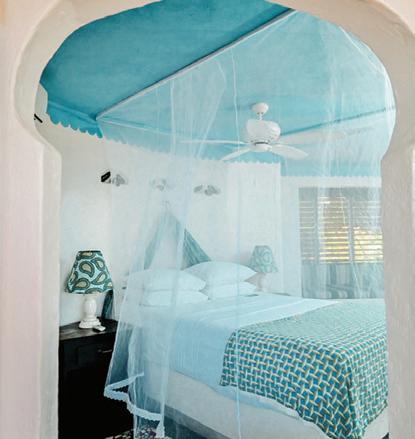
FAVOURITE FOOD: I was the founding artistic director of RAW Material Company, a centre for art, knowledge and society in Dakar, Senegal. I still have a home there and the first thing I crave when I arrive is soupe kandja – Senegalese okra soup. I am obsessed with okra. Fun fact: South Africa is the only African country I know of that does not have an okra dish.
SENEGAL’S BEST-KEPT SECRET: I always go to Ngor Island. It’s a small island just 900m from the mainland and has the most laid-back, hippie vibe. It’s a small community of artists, musicians, public poets and philosophers and it’s not too touristy. I sometimes swim to the island – it is magical.
ON GOING HOME: I visit my family in Cameroon as often as I can. I love going to the fish market and visiting the artist communities while there.
TRAVEL MUST-DO’S: I always make a point of visiting artist studios wherever I go, as they are such magical, privileged spaces. Having access to the process, to the artist’s factory and all that takes shape there is something you will never see in a gallery.
MOST MOVING STUDIO VISIT: I met Edouard Duval Carrié, a Haiti-born artist living in “Little Haiti” in Miami, Florida, and was incredibly moved by him. He is one of 157 artists in our landmark exhibition When We
CAMEROON-BORN CURATOR

KOYO KOUOH HAS HOMES IN SENEGAL, SWITZERLAND AND CAPE TOWN. THE EXECUTIVE DIRECTOR AND CHIEF CURATOR OF ZEITZ MOCAA IN CAPE TOWN SPENDS PLENTY OF TIME TRAVELLING FOR WORK, SO WHEN IT COMES TO DOWNTIME, HER BEDROOM IS HER GO-TO SANCTUARY
COMPILED BY JACQUIE MYBURGH CHEMALY
yourluxury.africa
See Us: A Century of Black Figuration in Painting, which is travelling to Kunstmuseum in Basel, Switzerland, in May 2024. But nothing will top my coming together with the late Senegalese conceptual artist Issa Samb, who I worked with for 20 years. The first time I attended a performance of his work in Senegal I was mesmerised.
ON BASEL: This is where I enjoy the ultimate staycation. The man in my life was born and raised here. I travel so often for work, so when we get to Switzerland, our home is my sanctuary where I enjoy solitude.
RECENT TRAVEL REVELATION: I’ve just been to Jamaica and it crept under my skin. I always knew I’d fall in love with the island. It confirmed my intuitive connection with Black geographies – it was a very profound experience. I’d like do a road trip across the island. Jakes Hotel at Treasure Beach is a must-visit.

ON ROAD TRIPPING: I love a road trip and recently travelled the Gullah Geechee corridor in the United States. It goes from North Carolina, through Florida, to the swamplands in the coastal south. I’ve also followed the civil rights trails in Alabama and Mississippi. Every person interested in Black history should visit these places. History hangs in the air, swims in the waters, sits on trees. You can sense it.
TRAVEL ESSENTIALS: I need to have comfortable clothing and sneakers. Nothing beats the Pleats Please range by Issey Miyake. You look dressed up and dressed down at the same time. ■

48
IMAGE PHOTOGRAPHY BY ANDILE BUKA, WWW.JAKESHOTEL.COM, SHUTTERSTOCK YOUR DOWNTIME
FROM LEFT: Jakes Hotel, Treasure Beach, Jamaica; Jakes Hotel’s beautiful interior; Pleats Please by Issey Miyake
“If you can cut it right, getting your proportions right, letting the light through the stone, you can really make it speak”
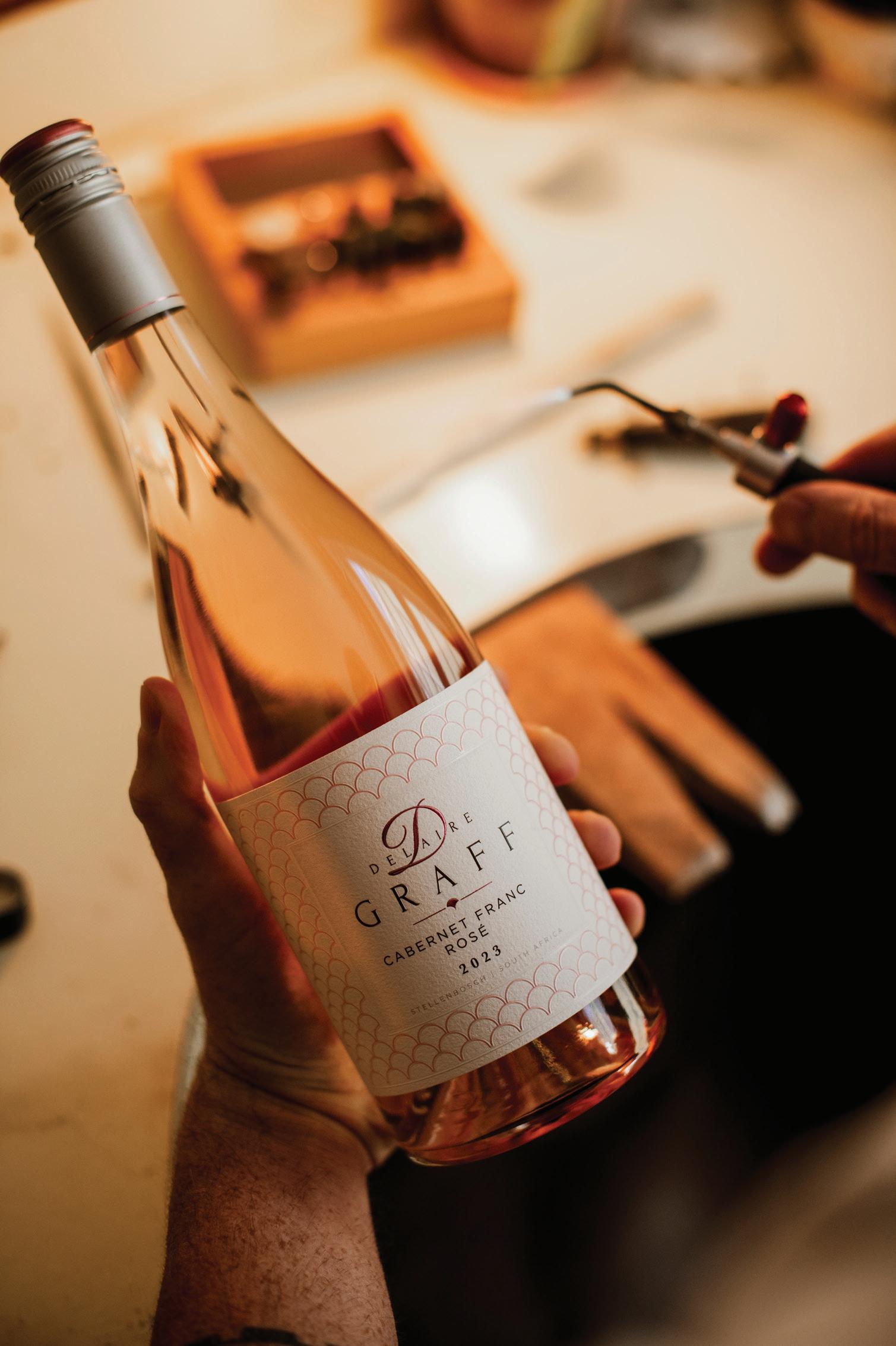
– Laurence Graff OBE








































































 Dolce&Gabbana Solar
Dolce&Gabbana Solar







































































 WORDS MATTHEW MCCLURE
WORDS MATTHEW MCCLURE









